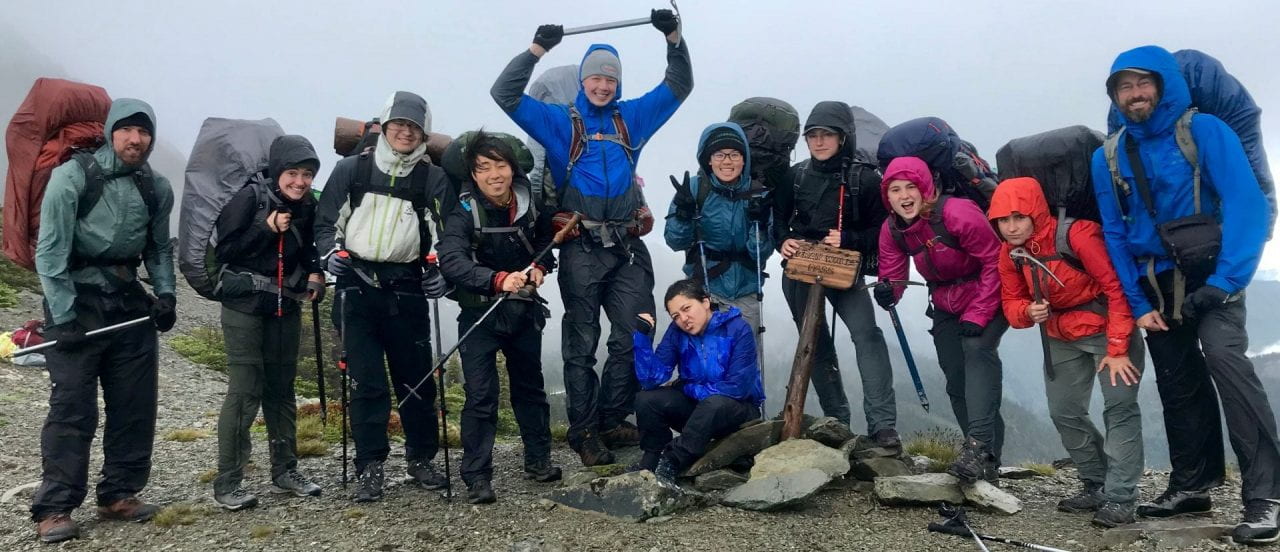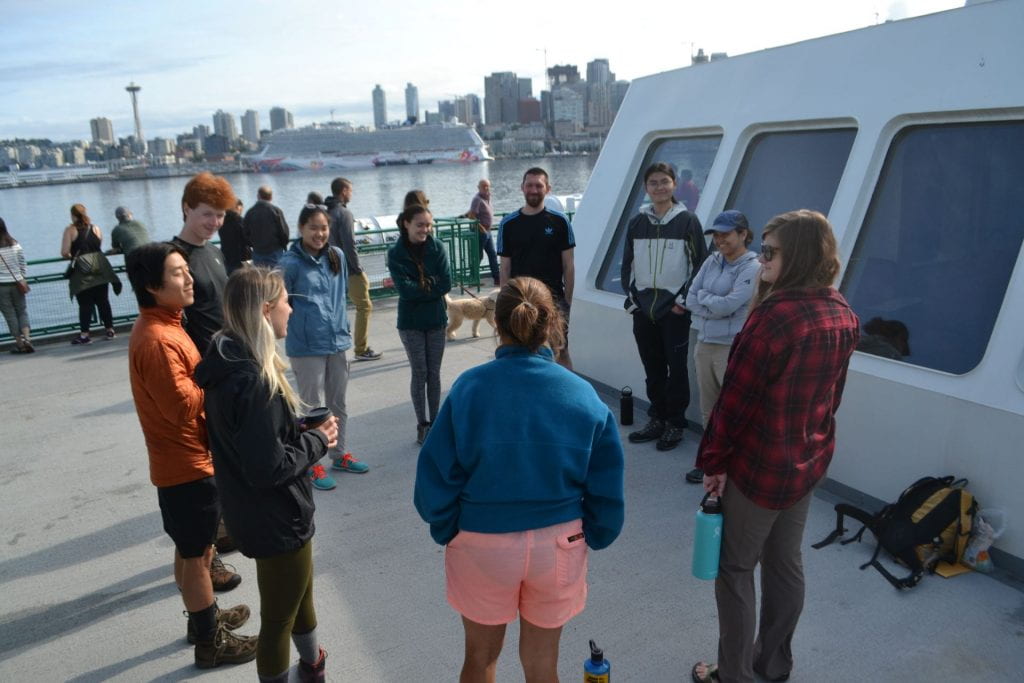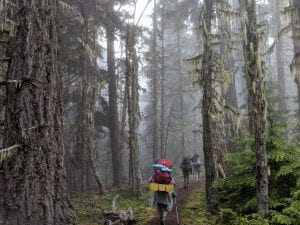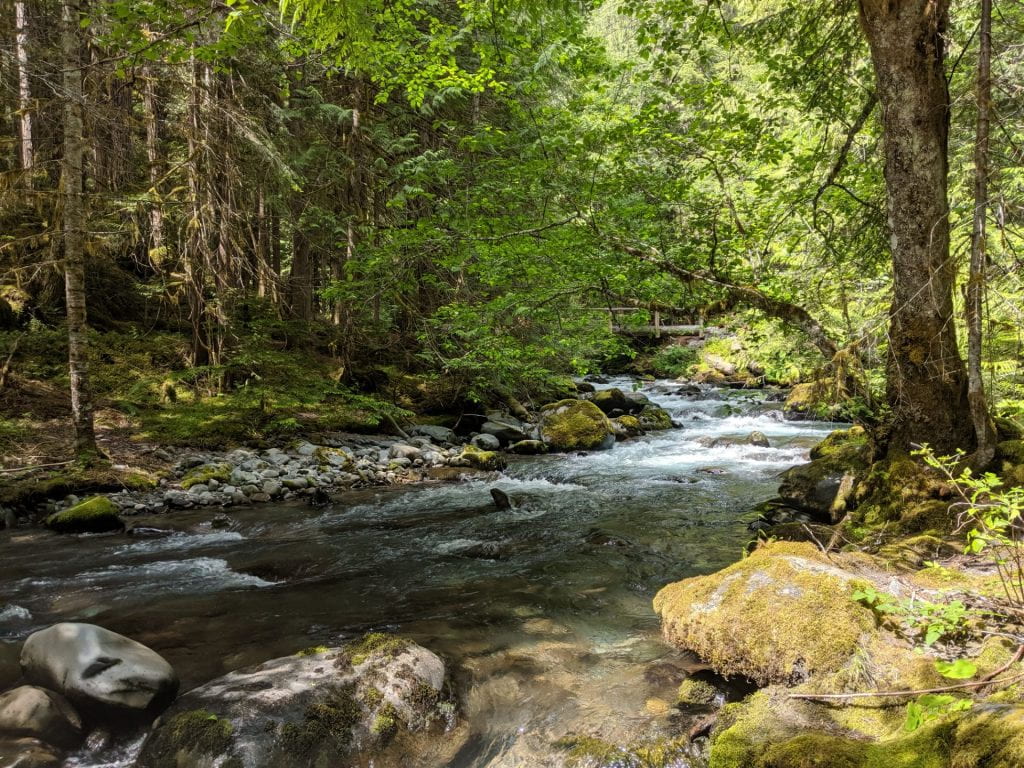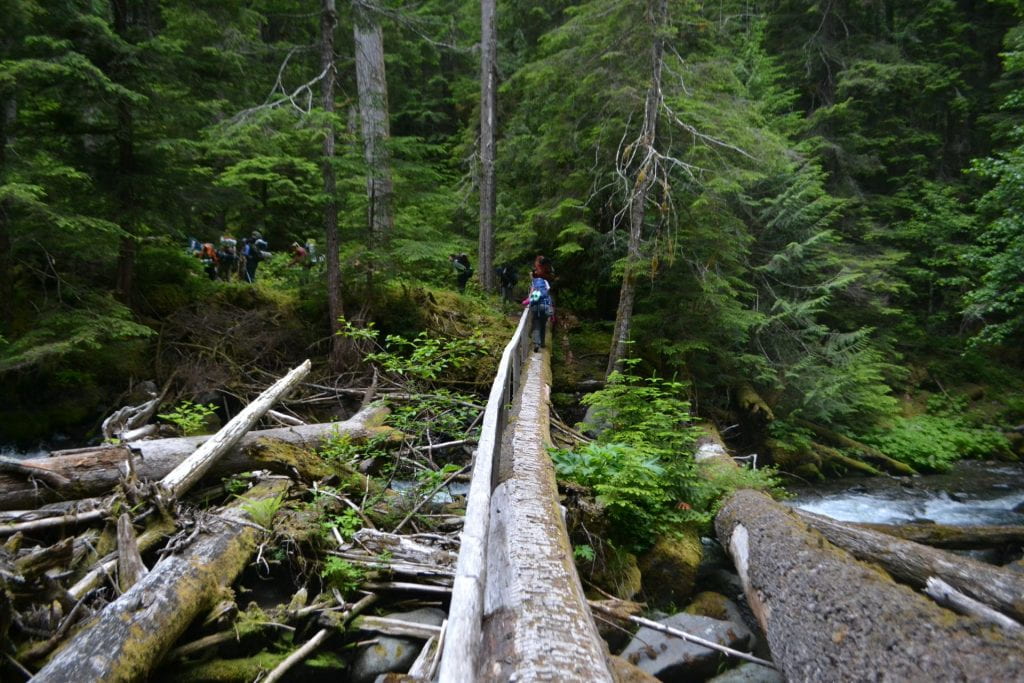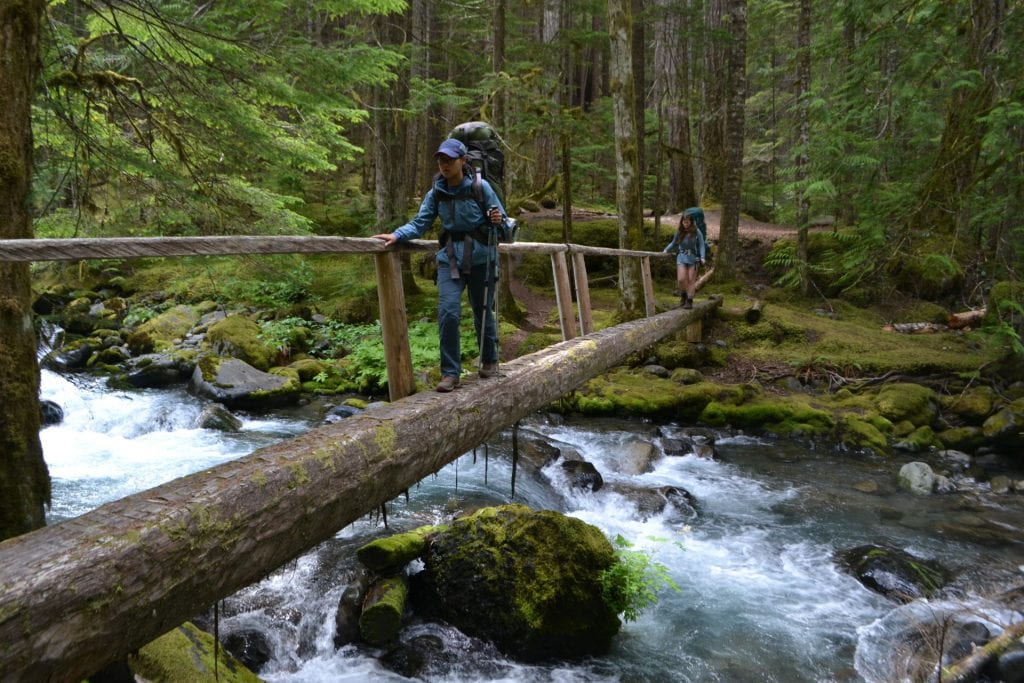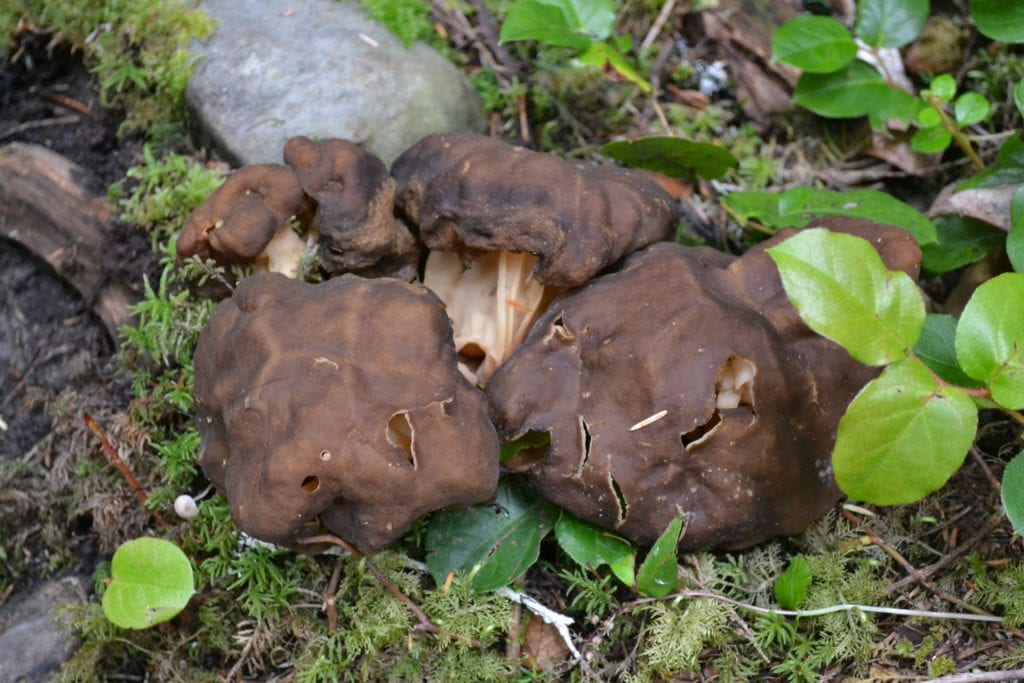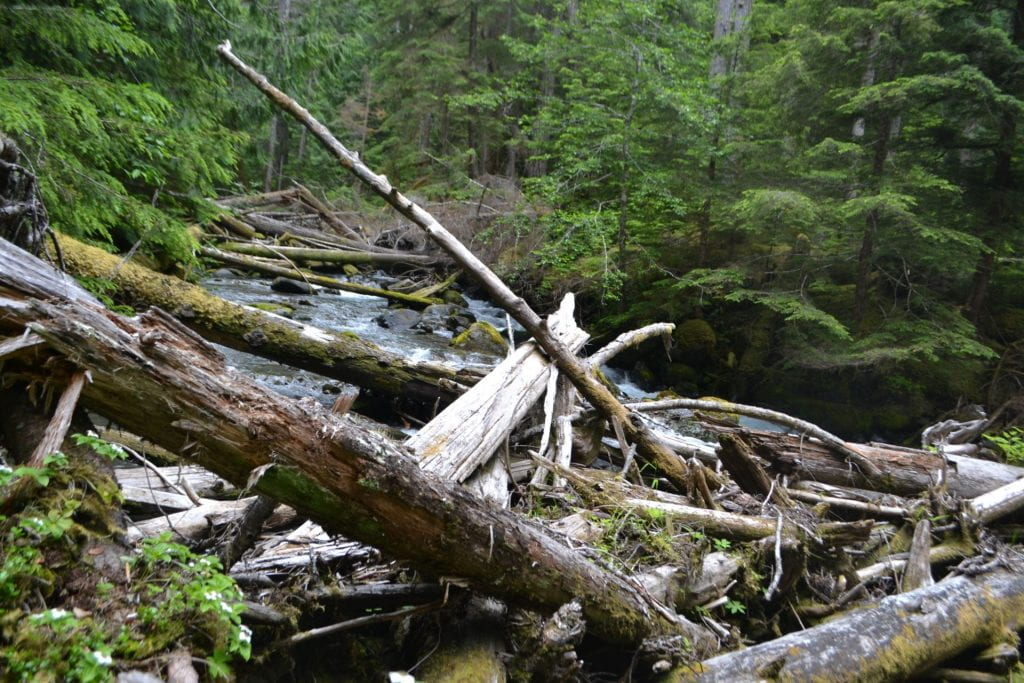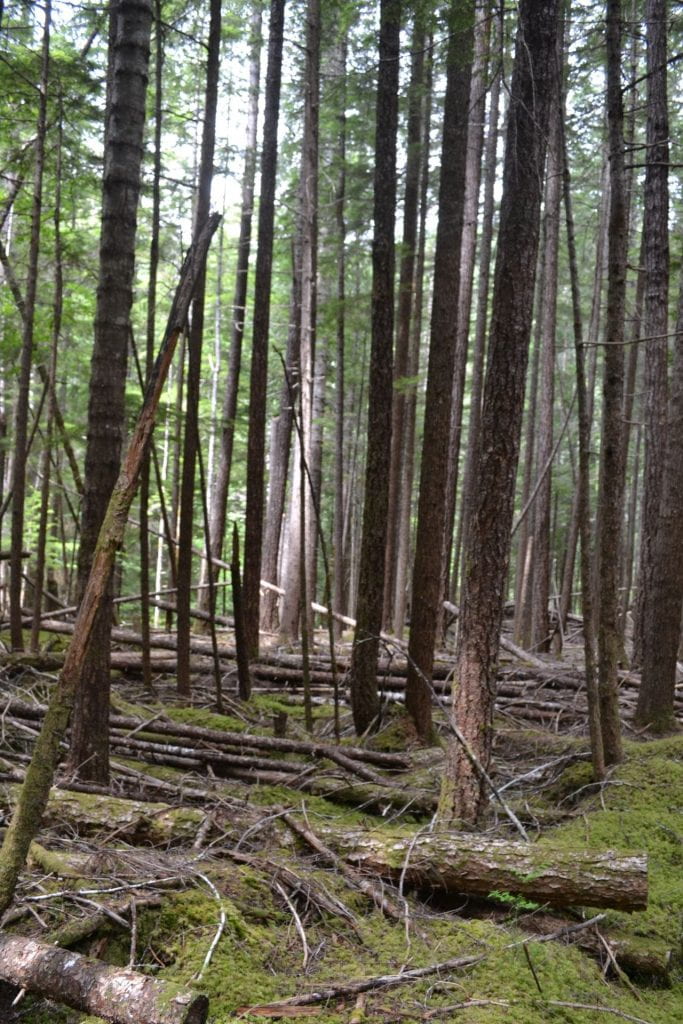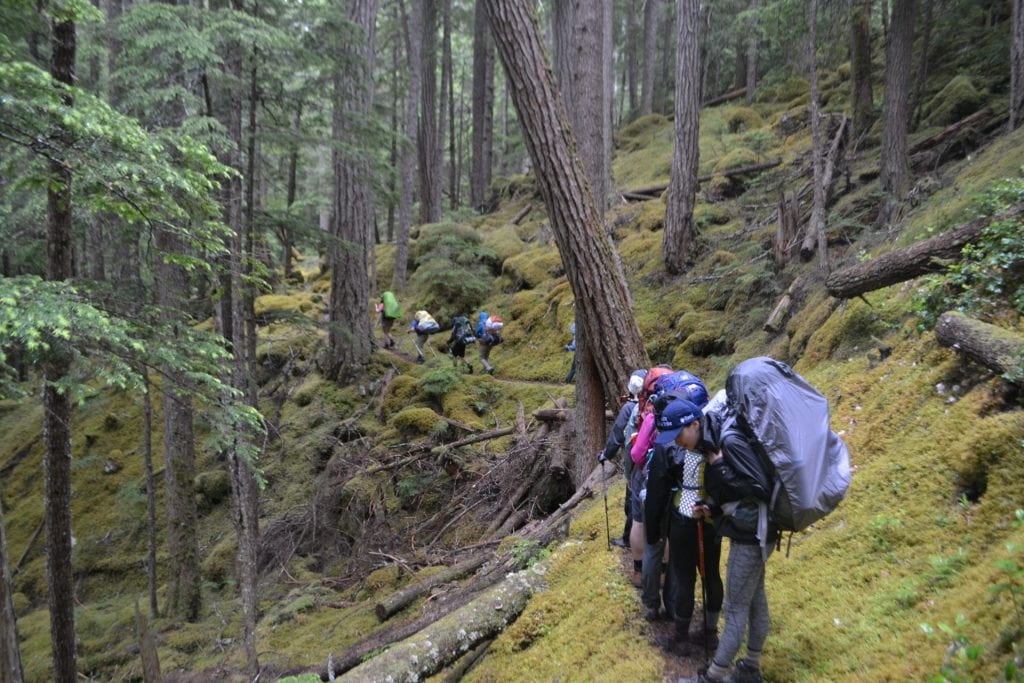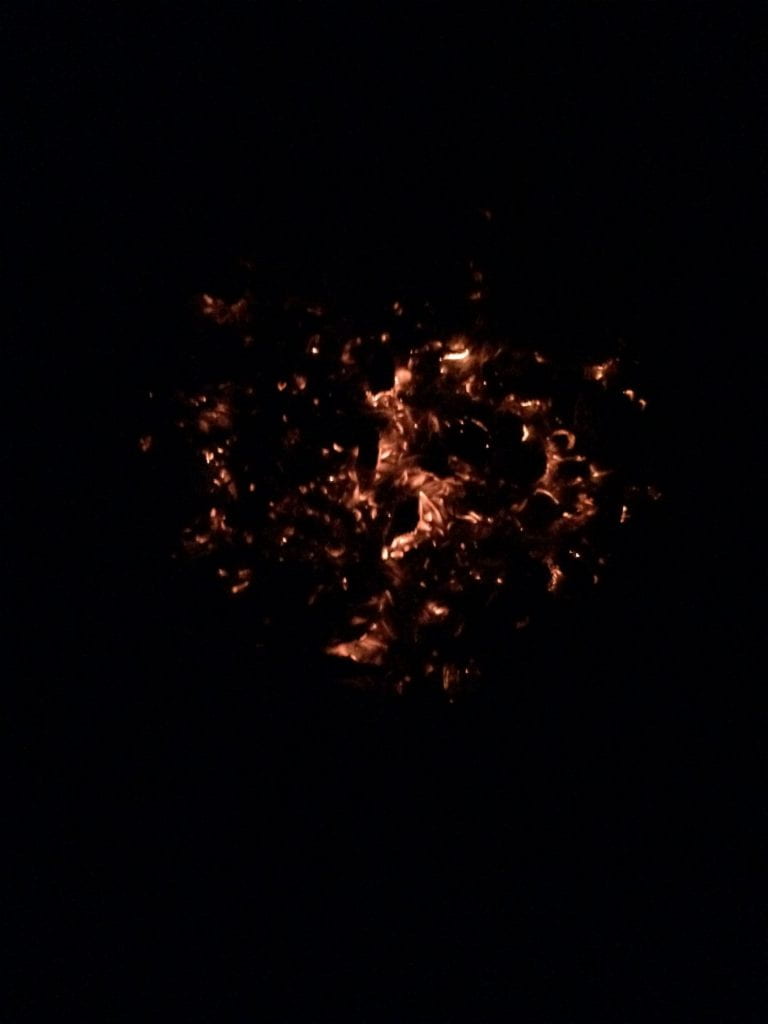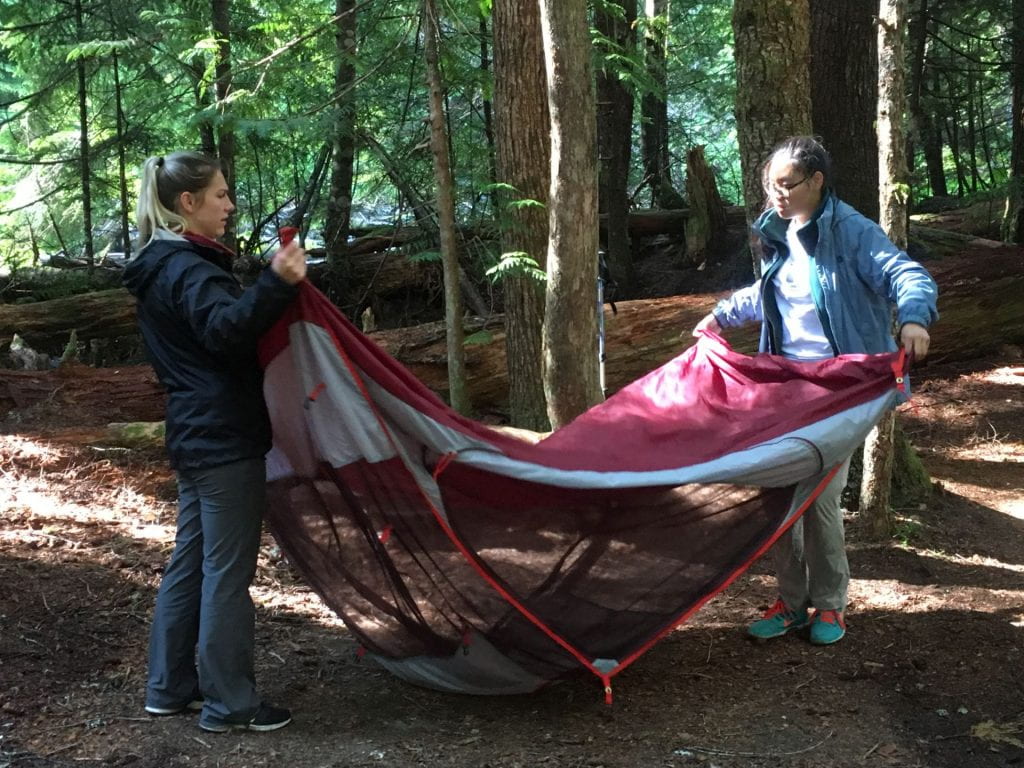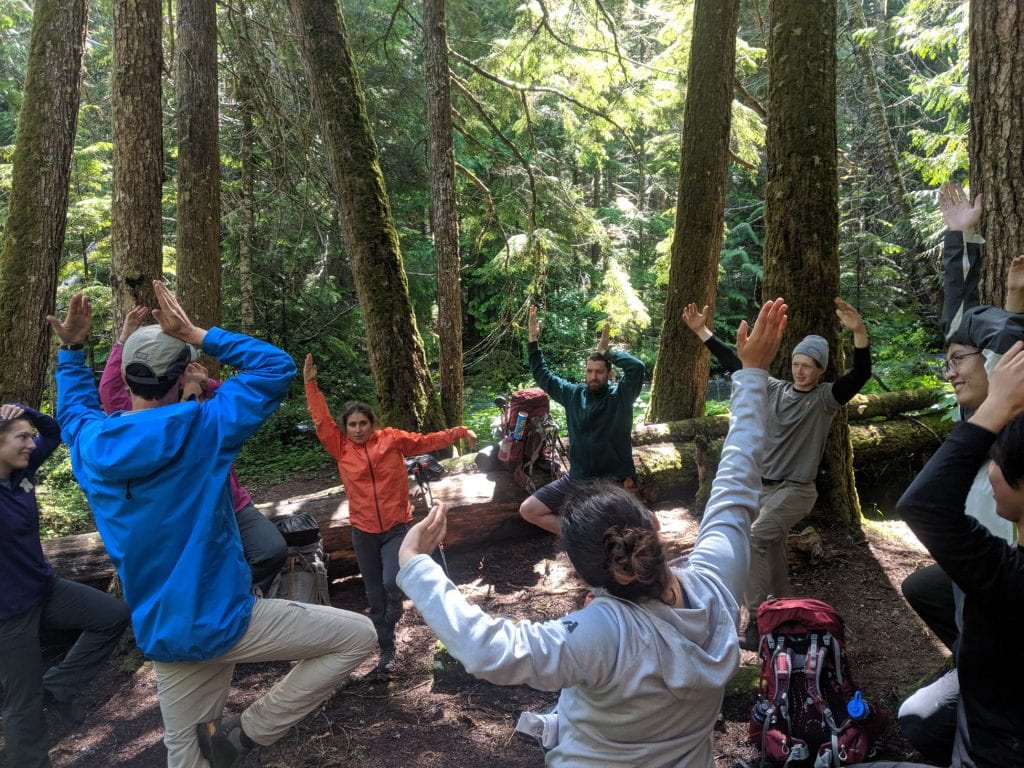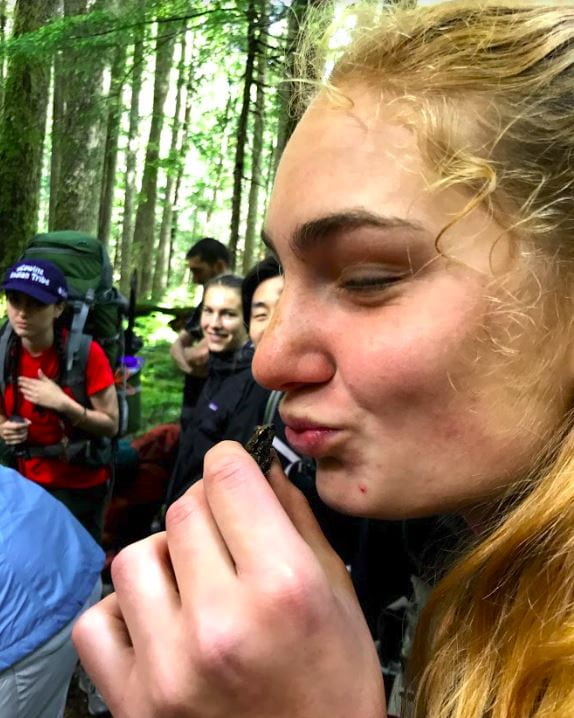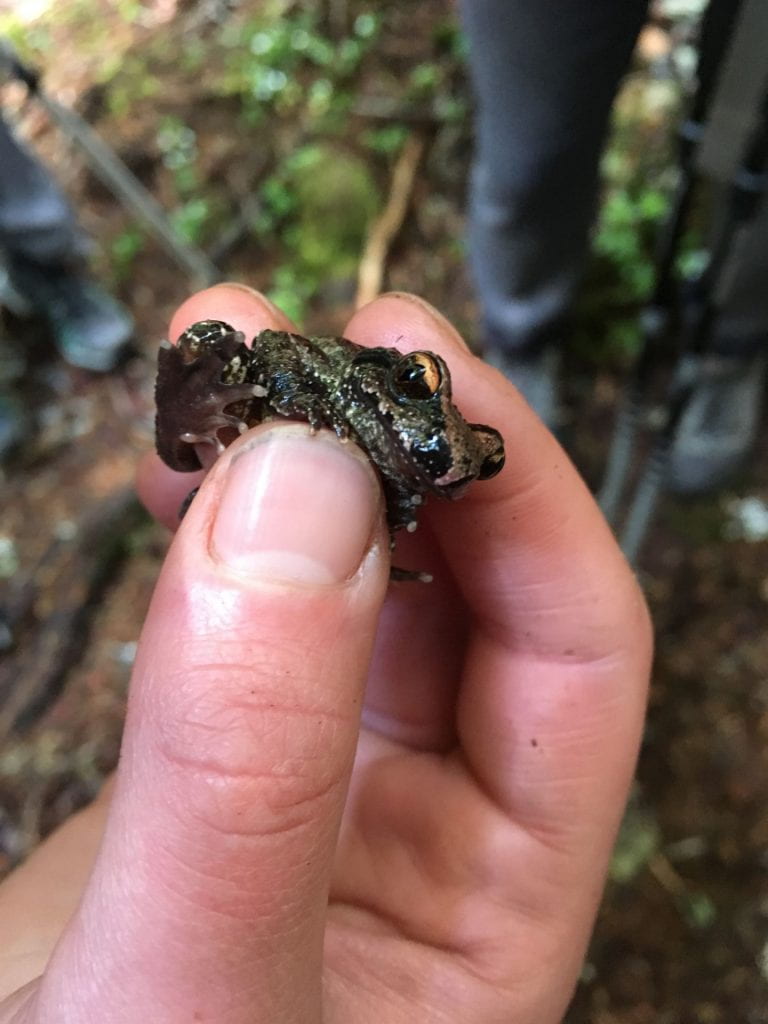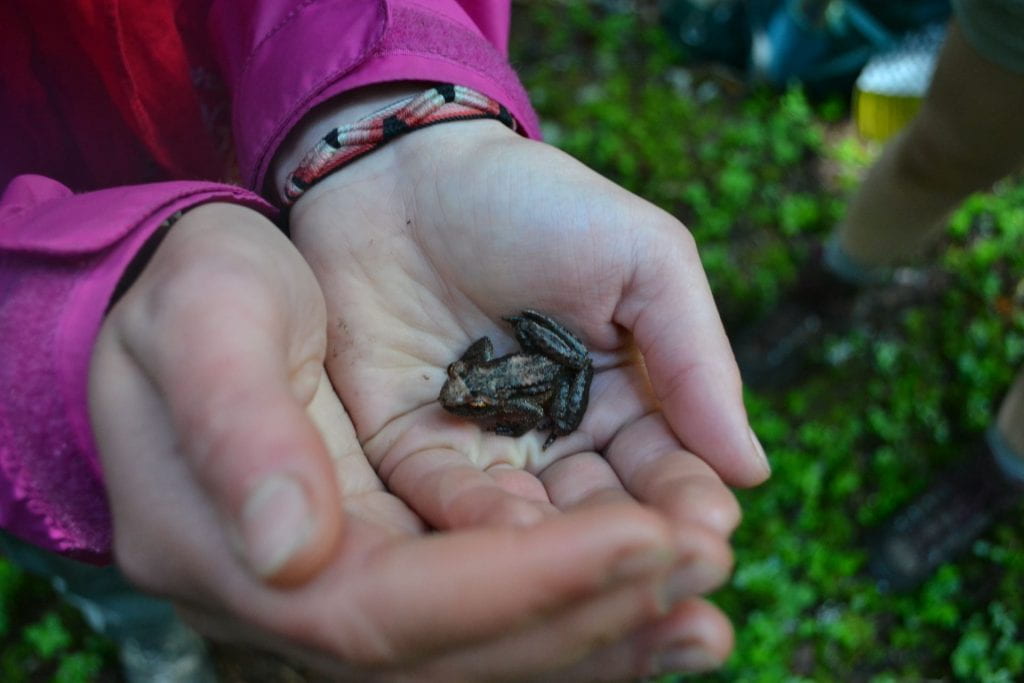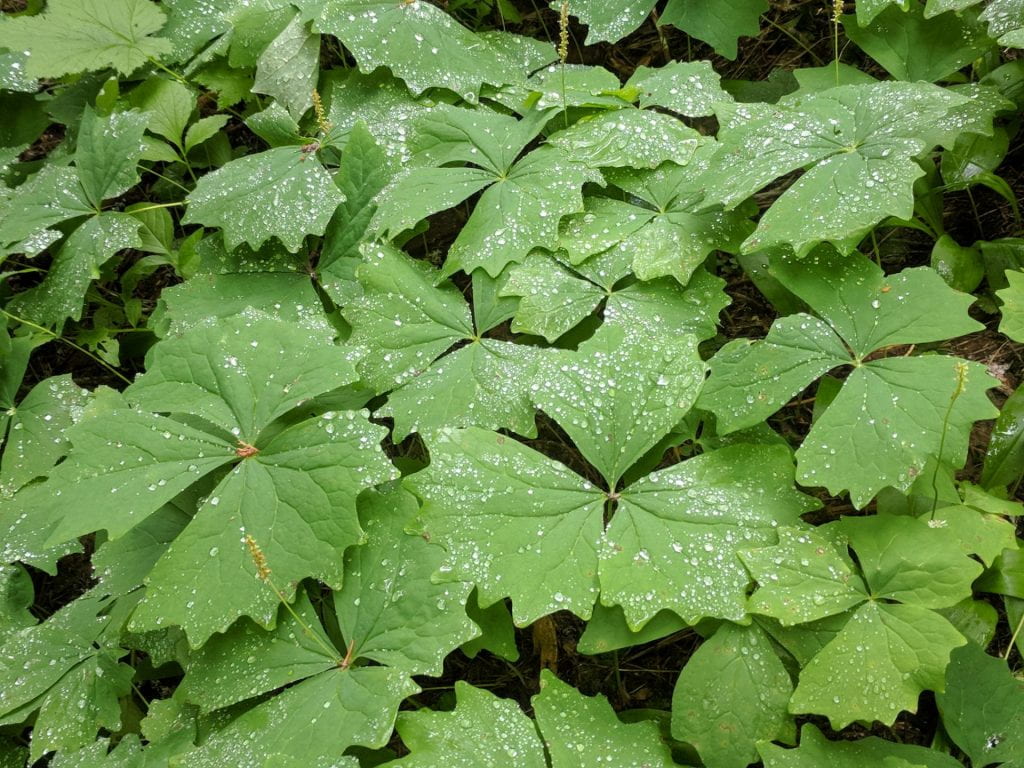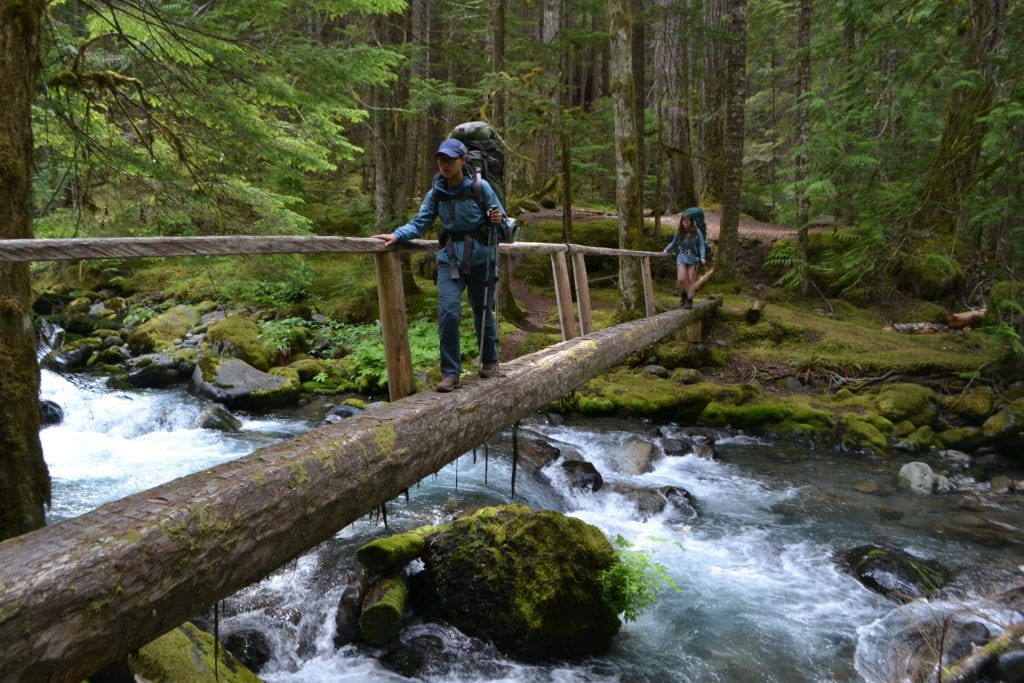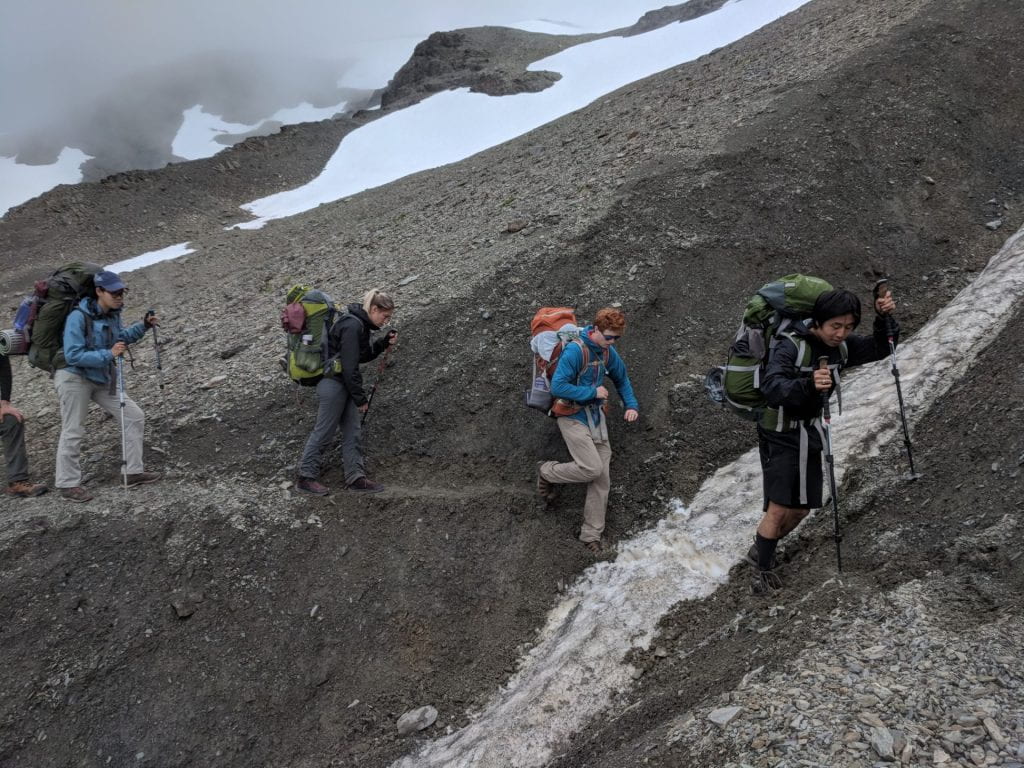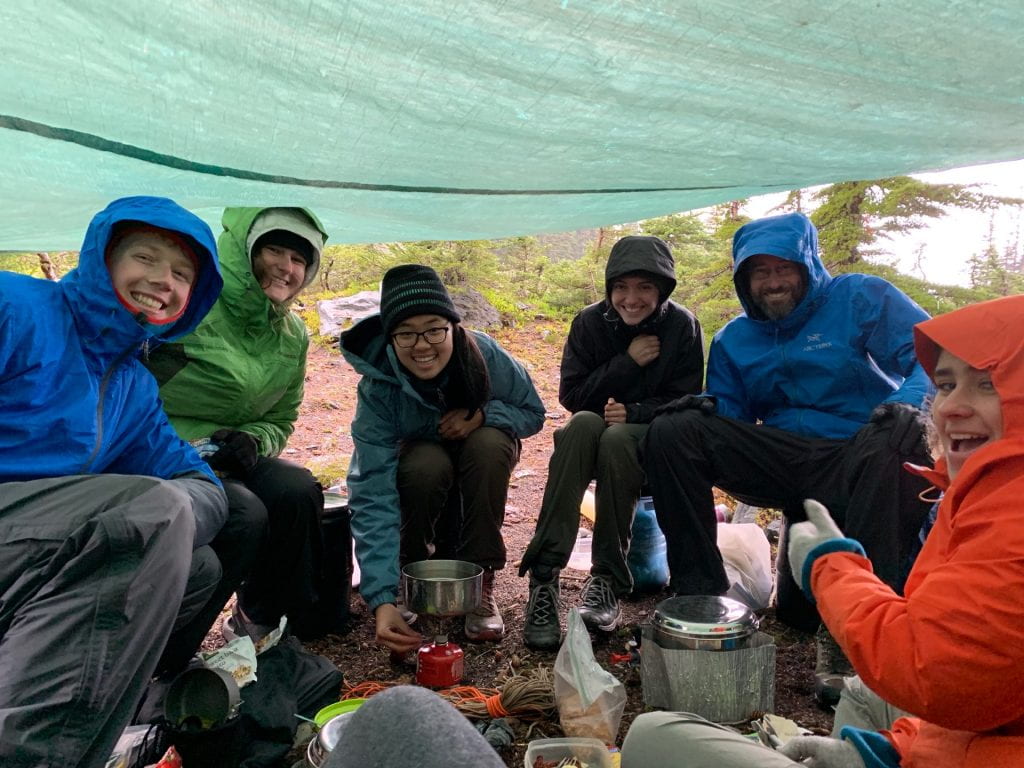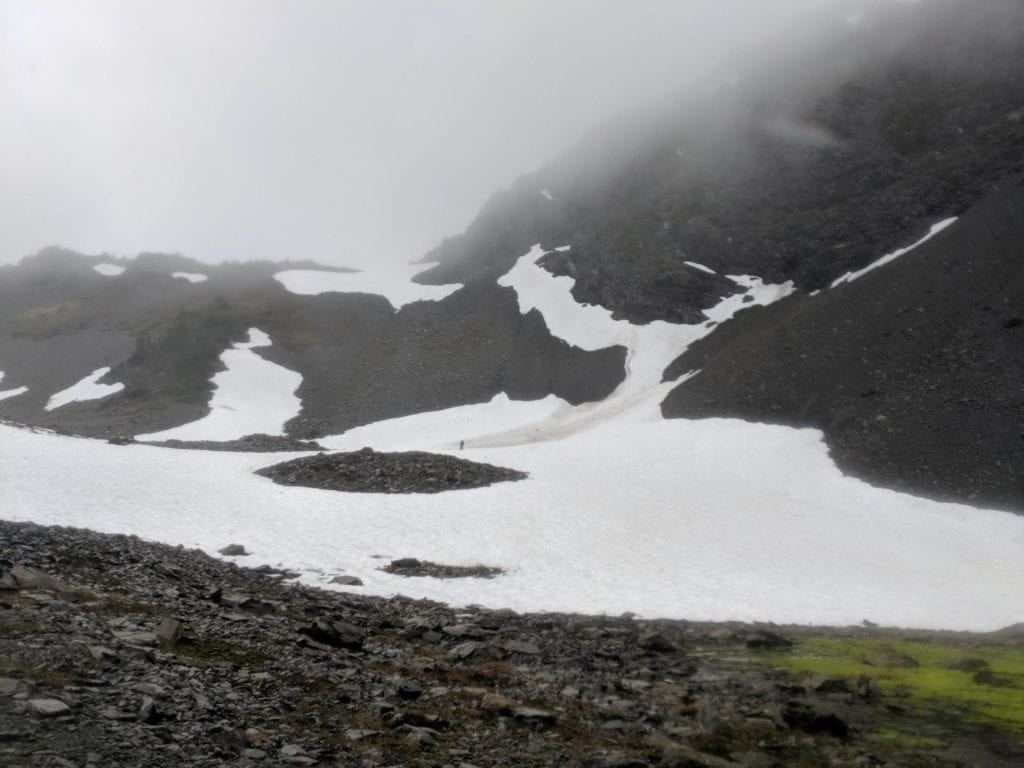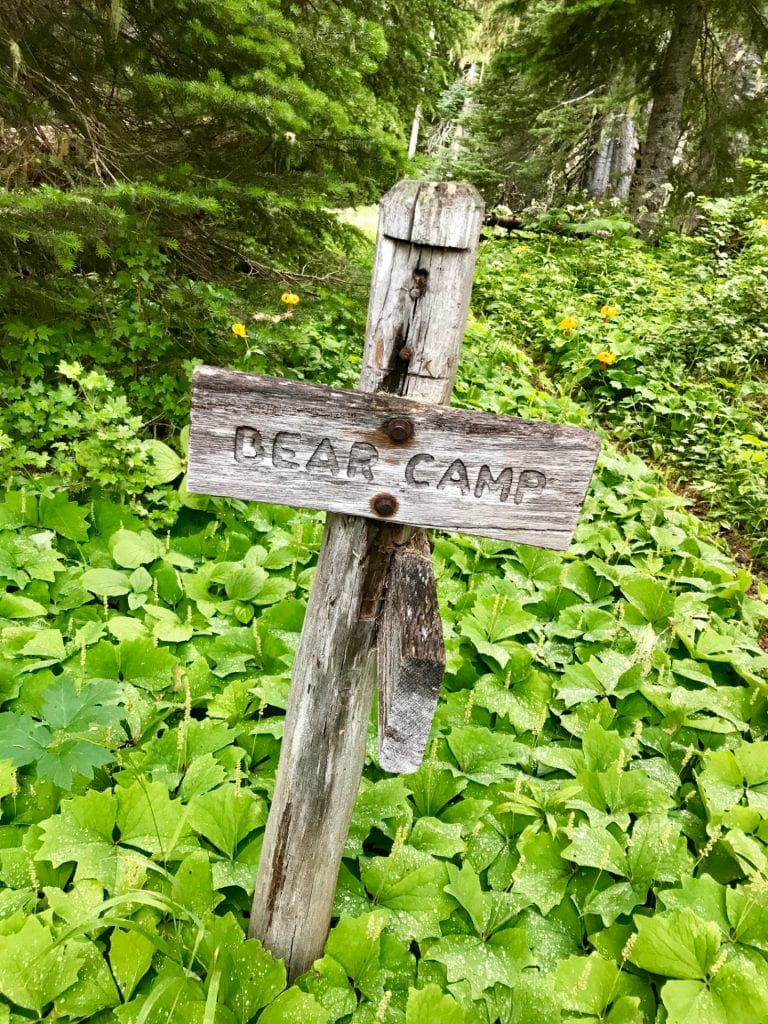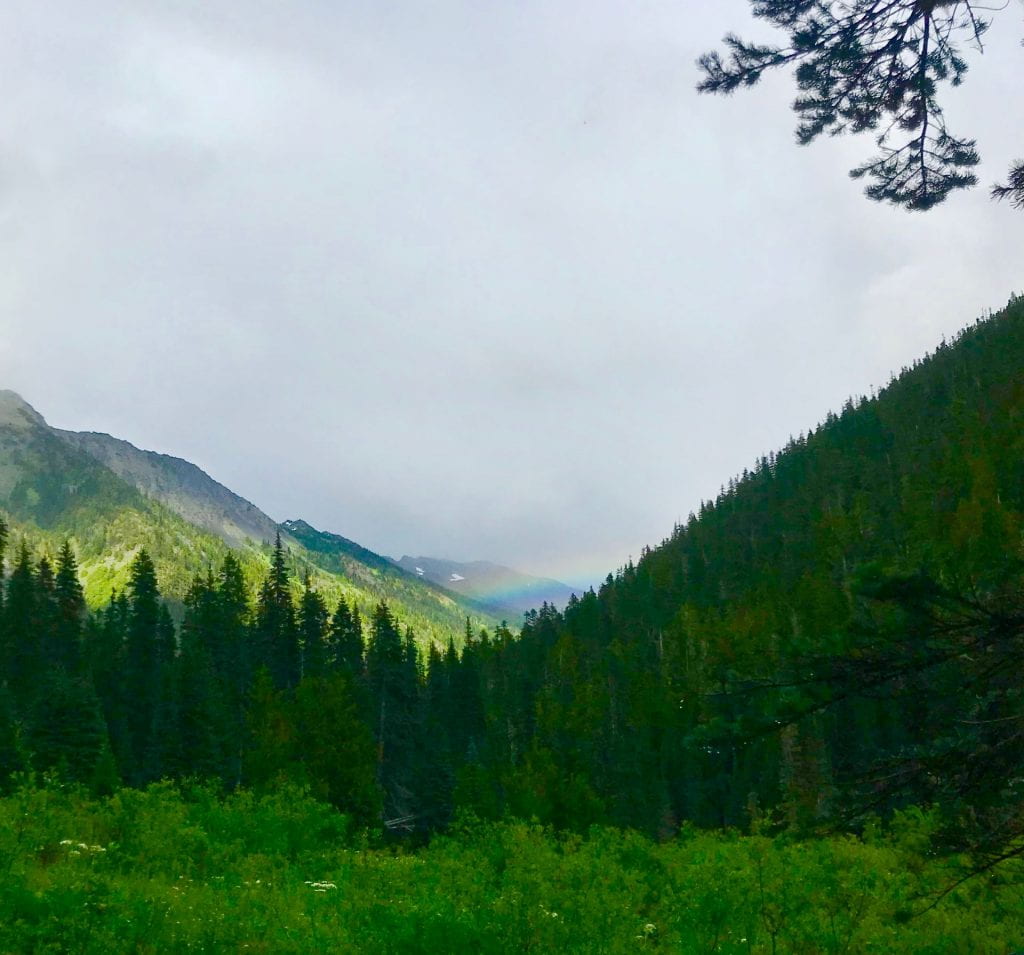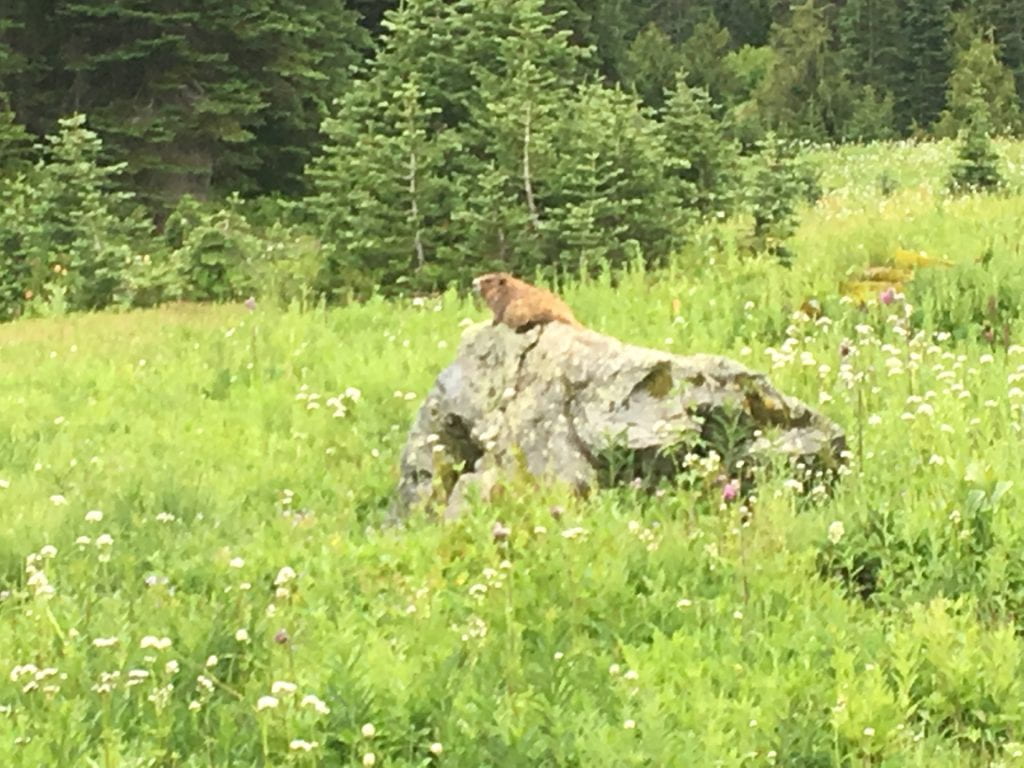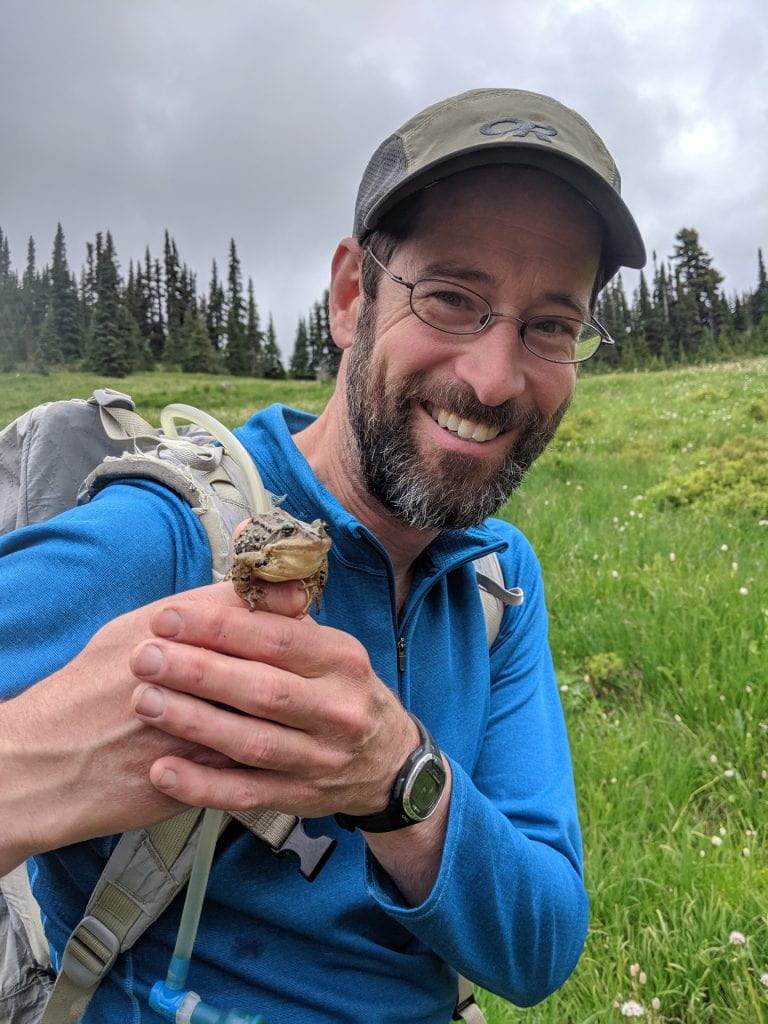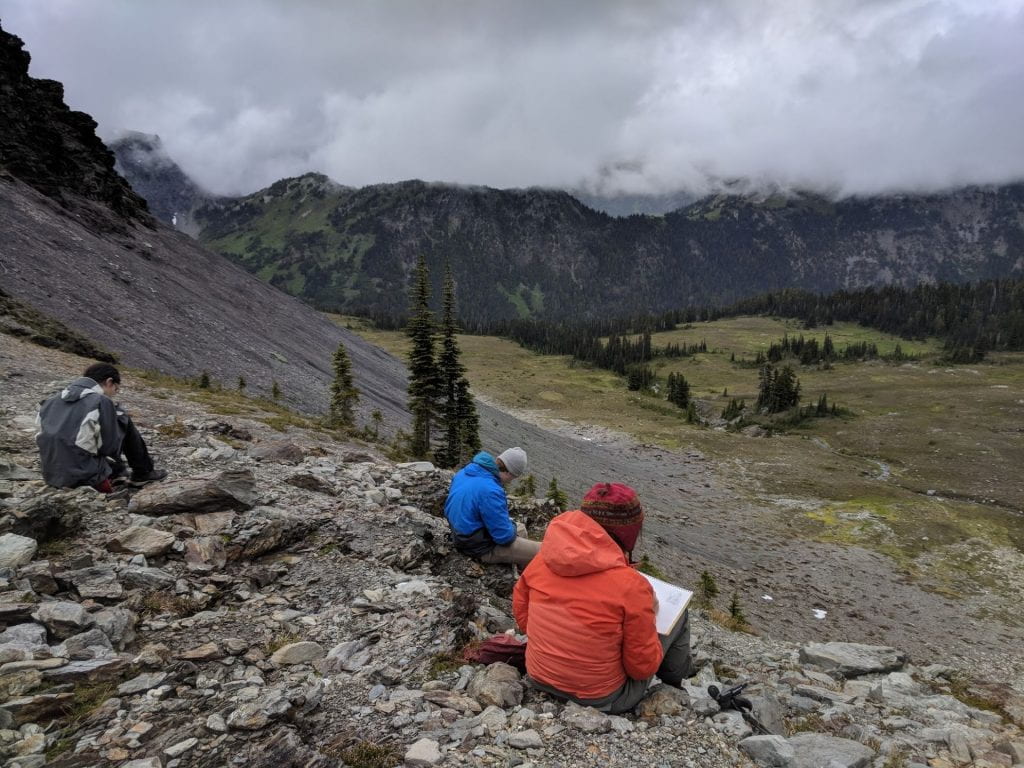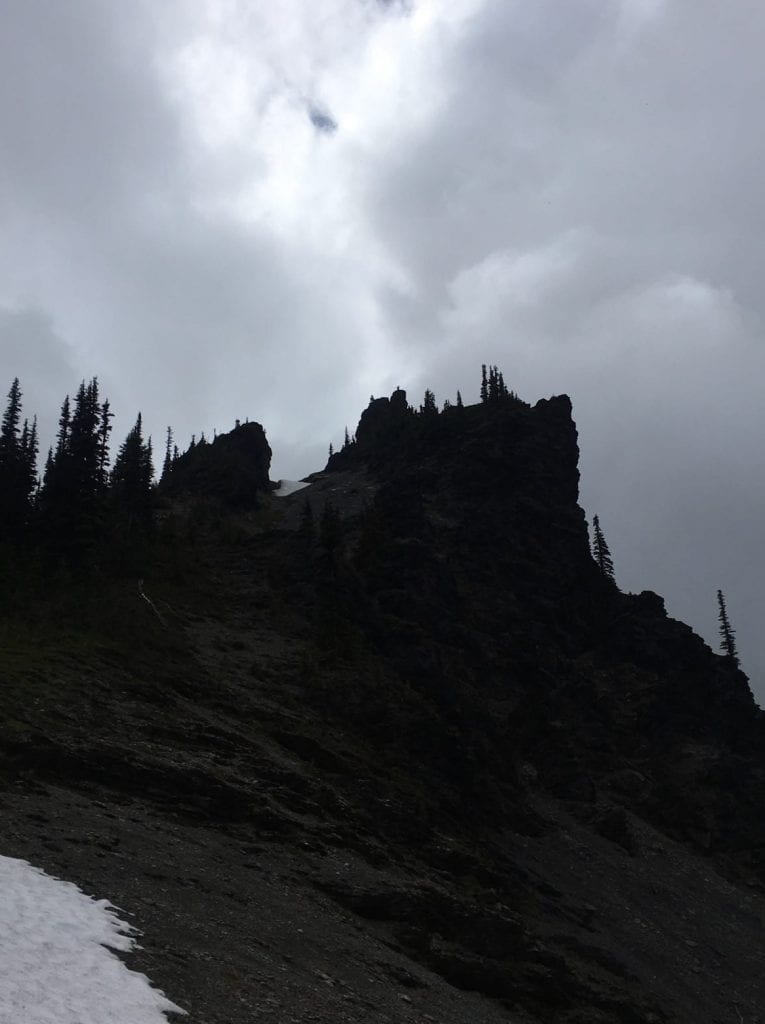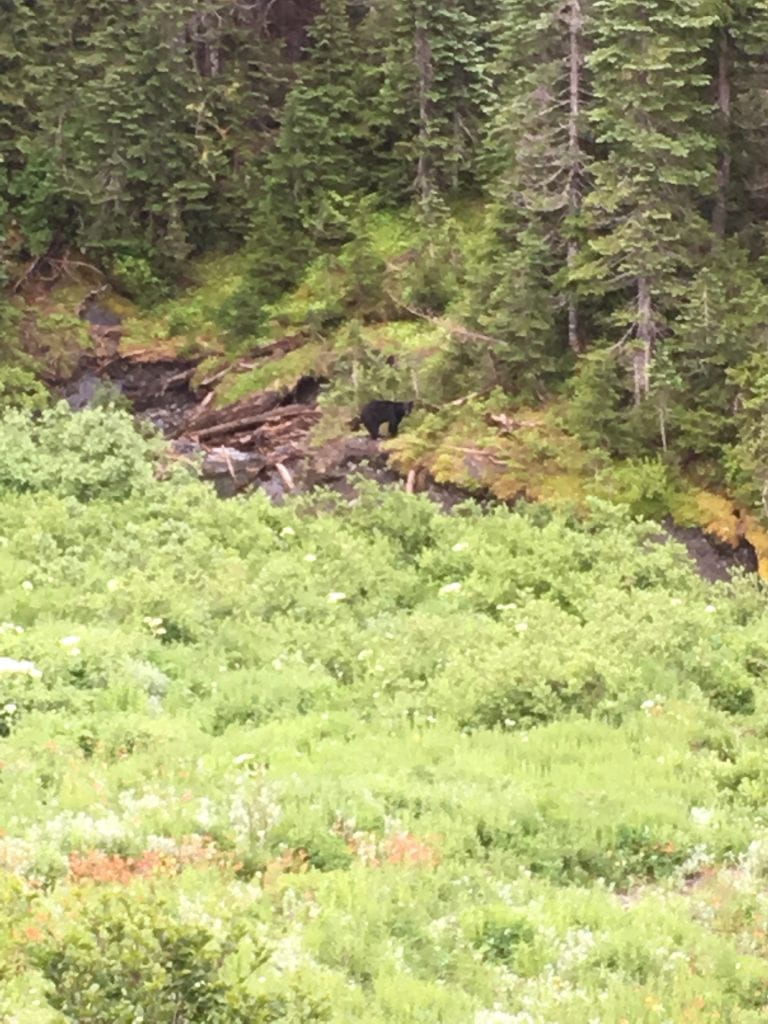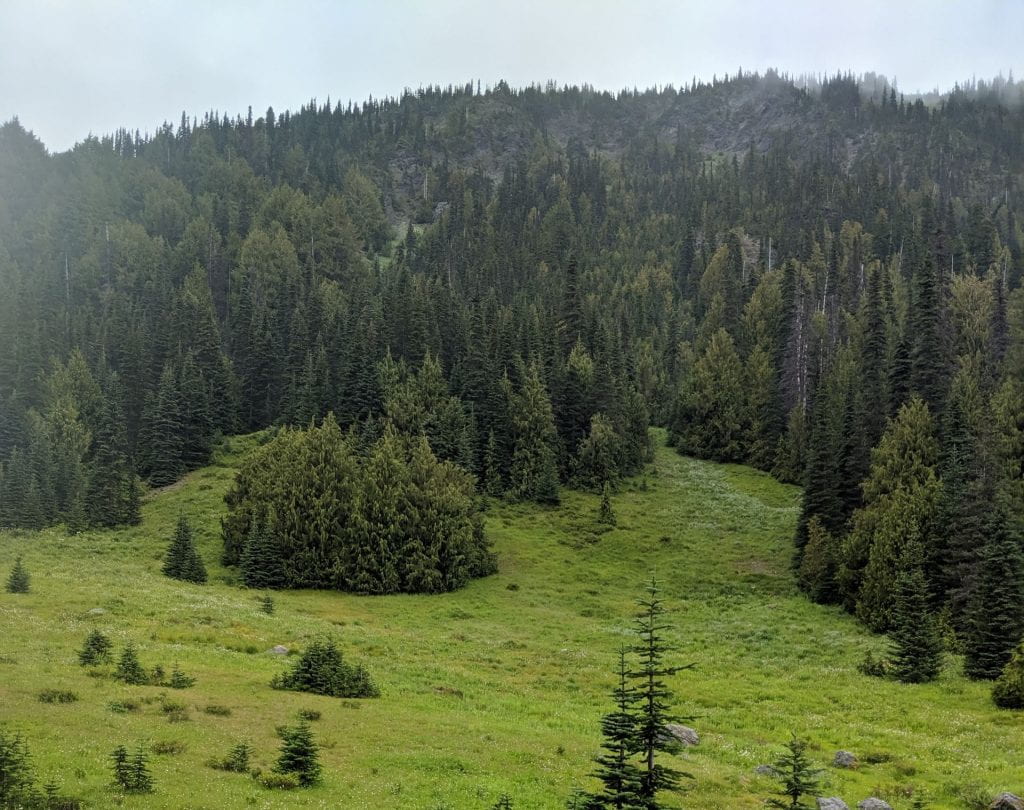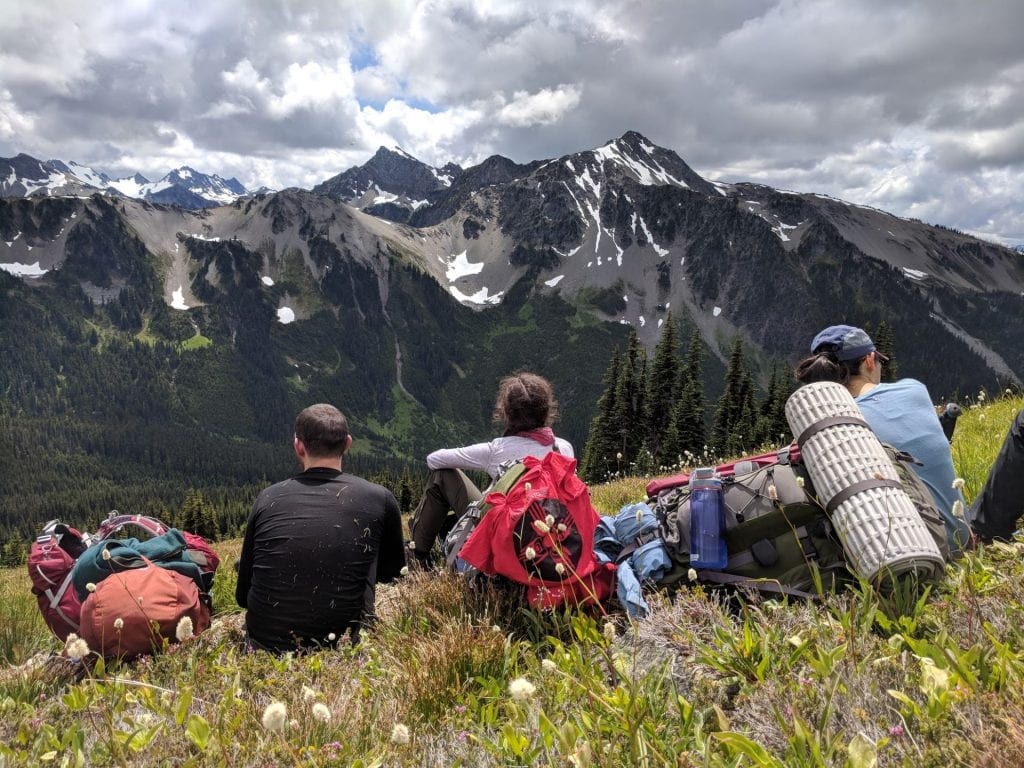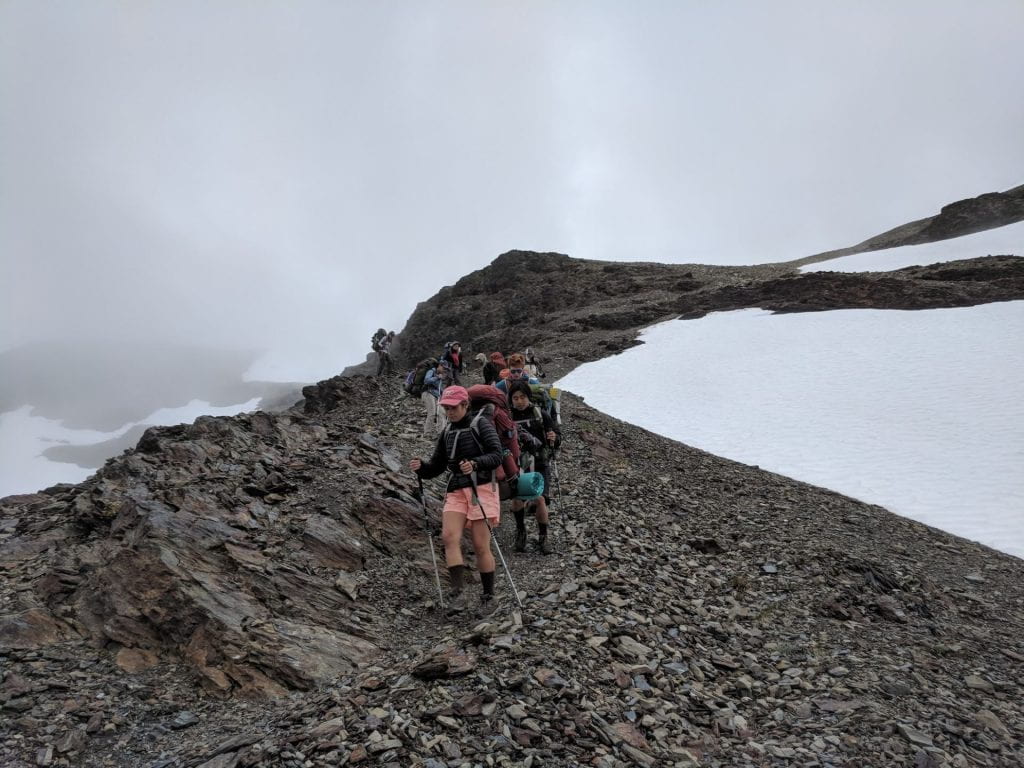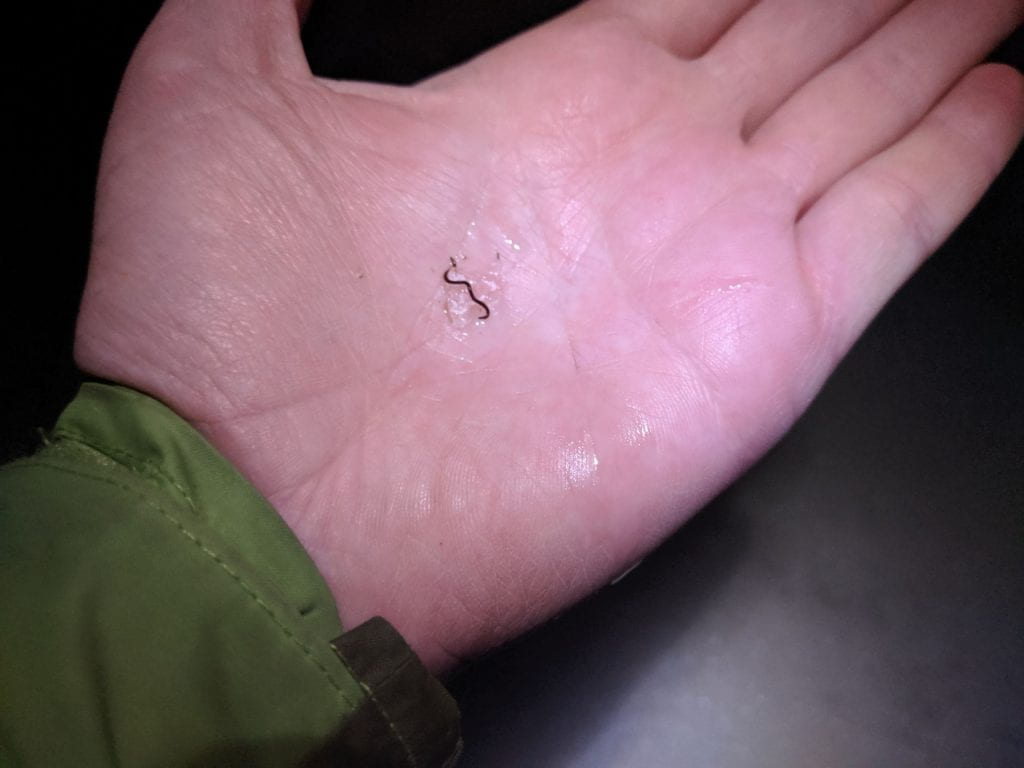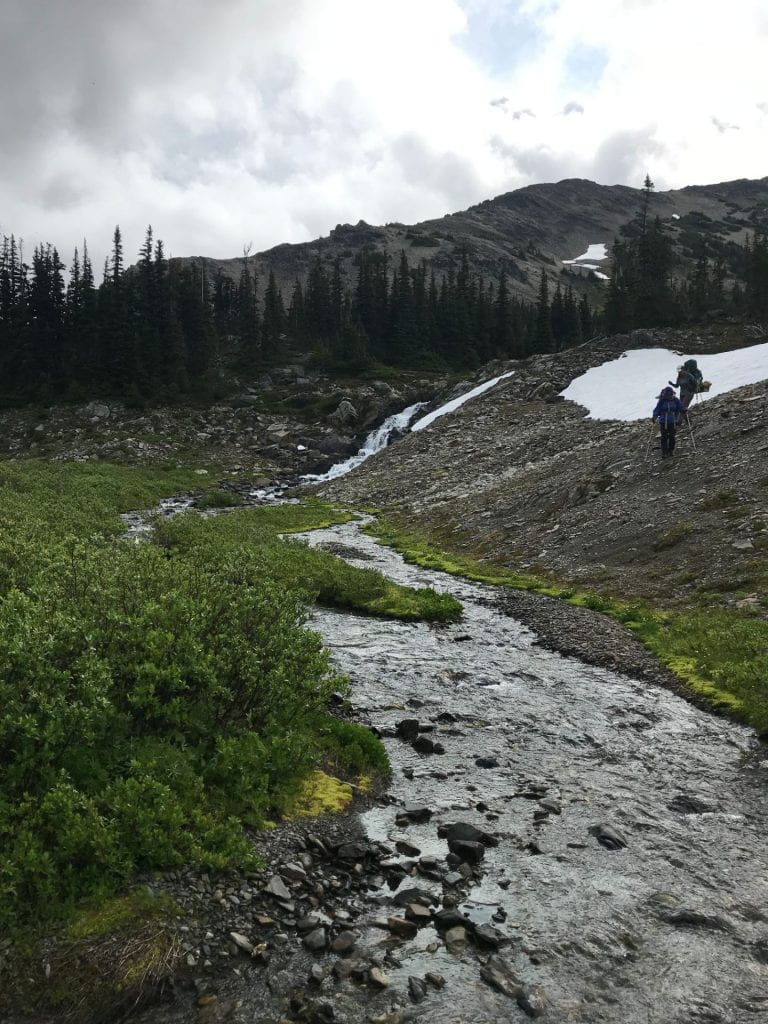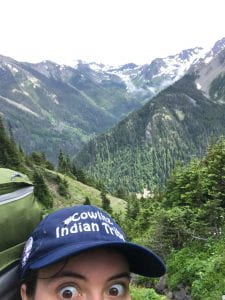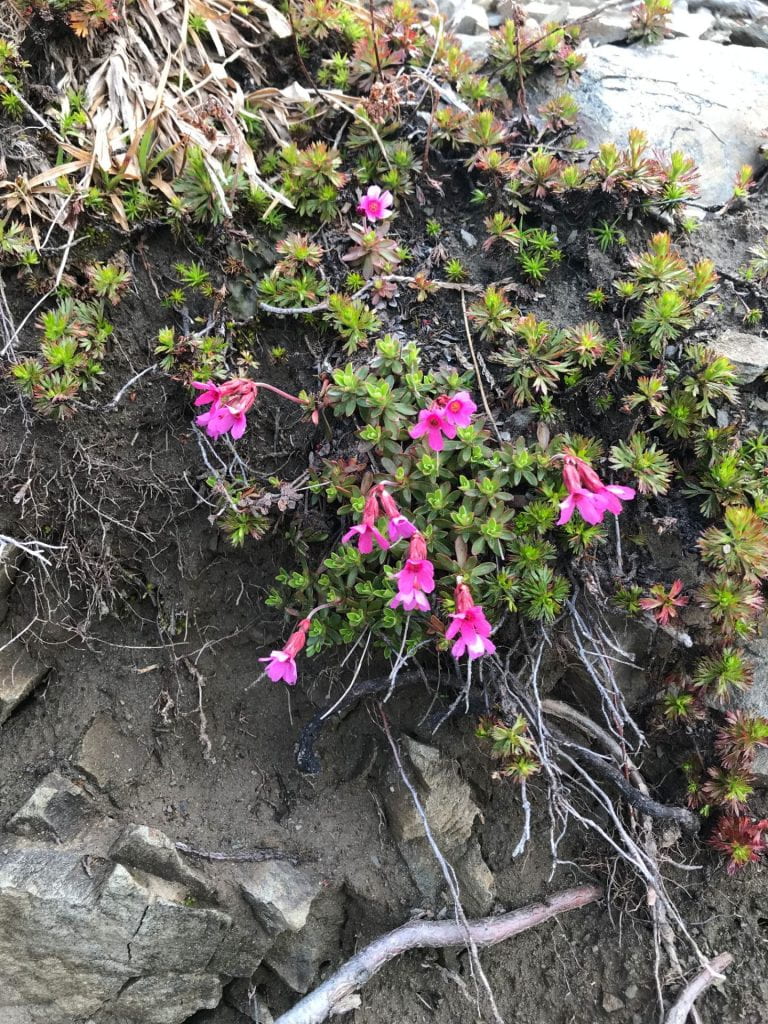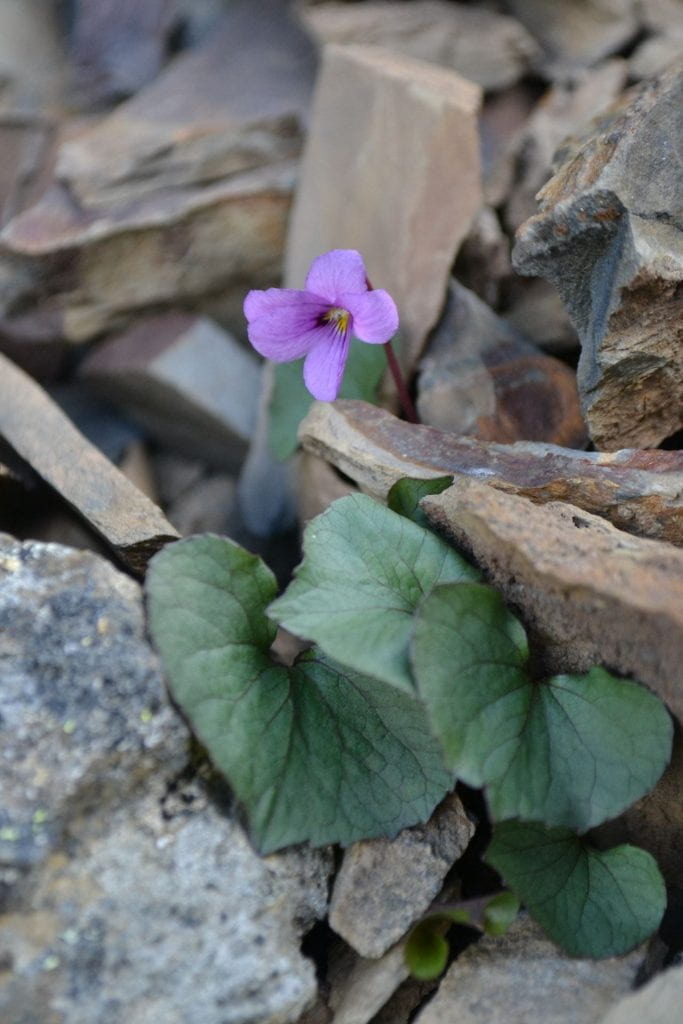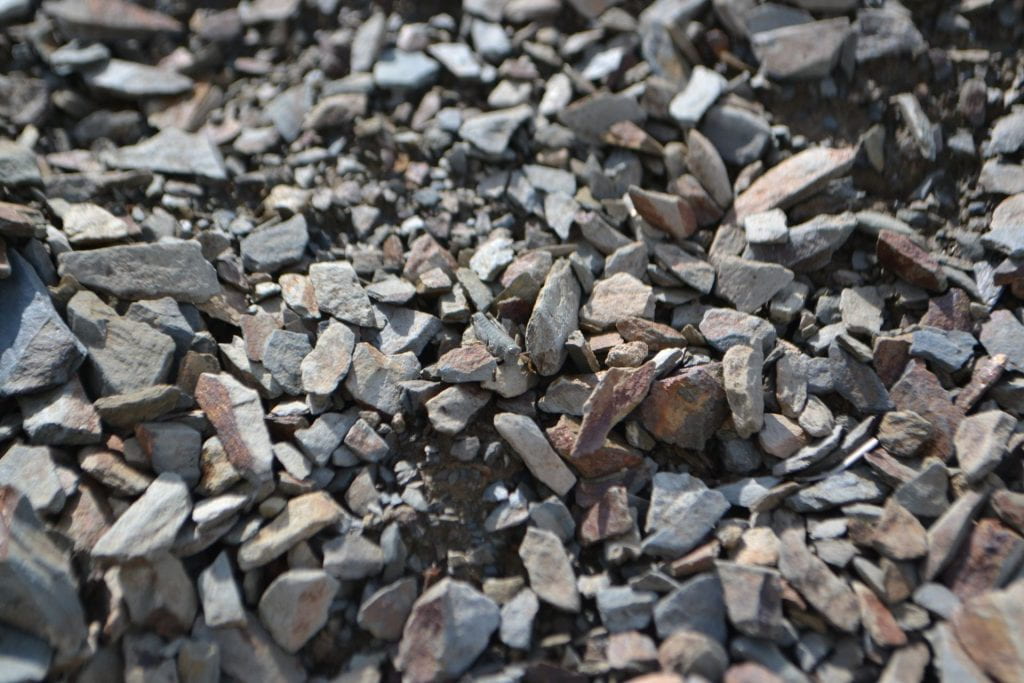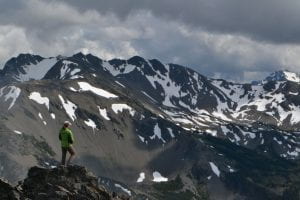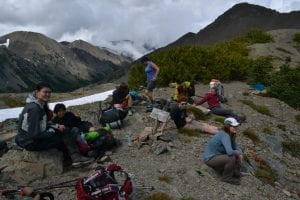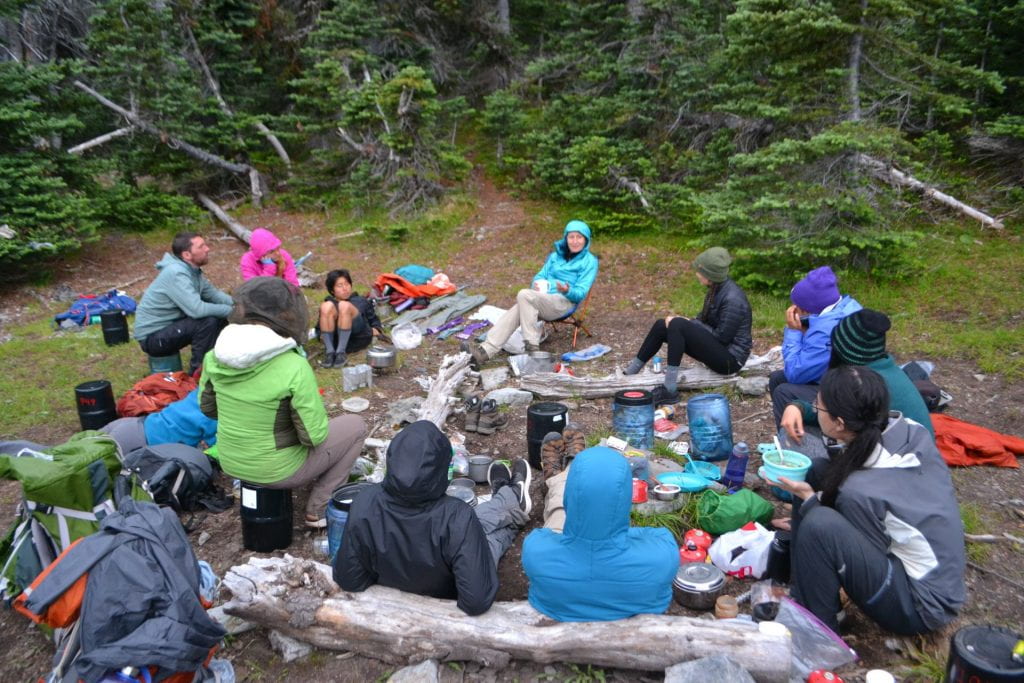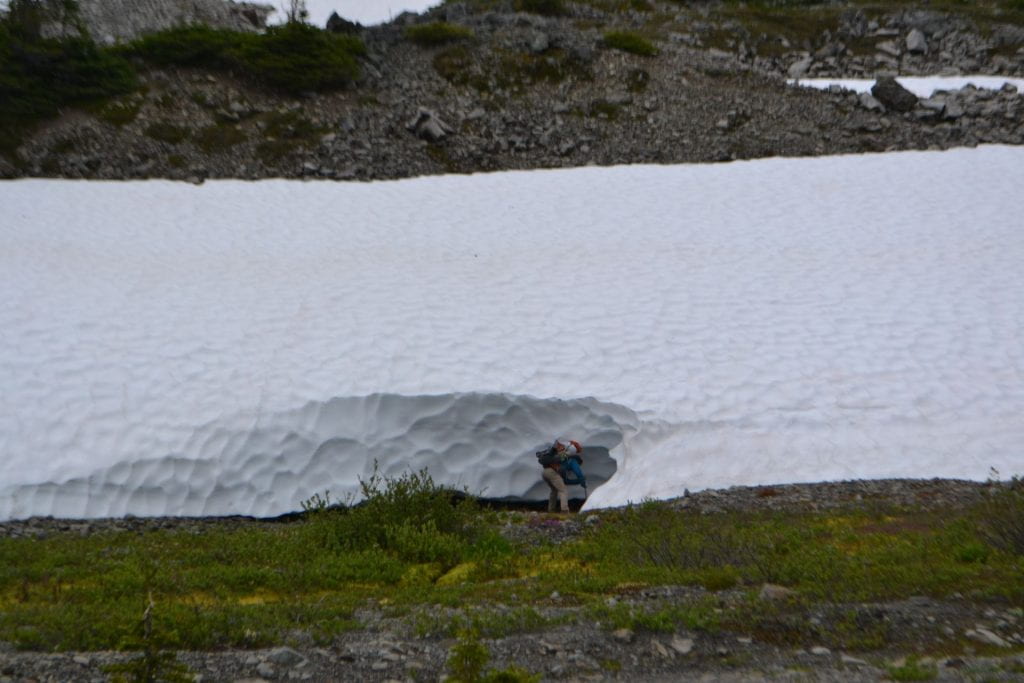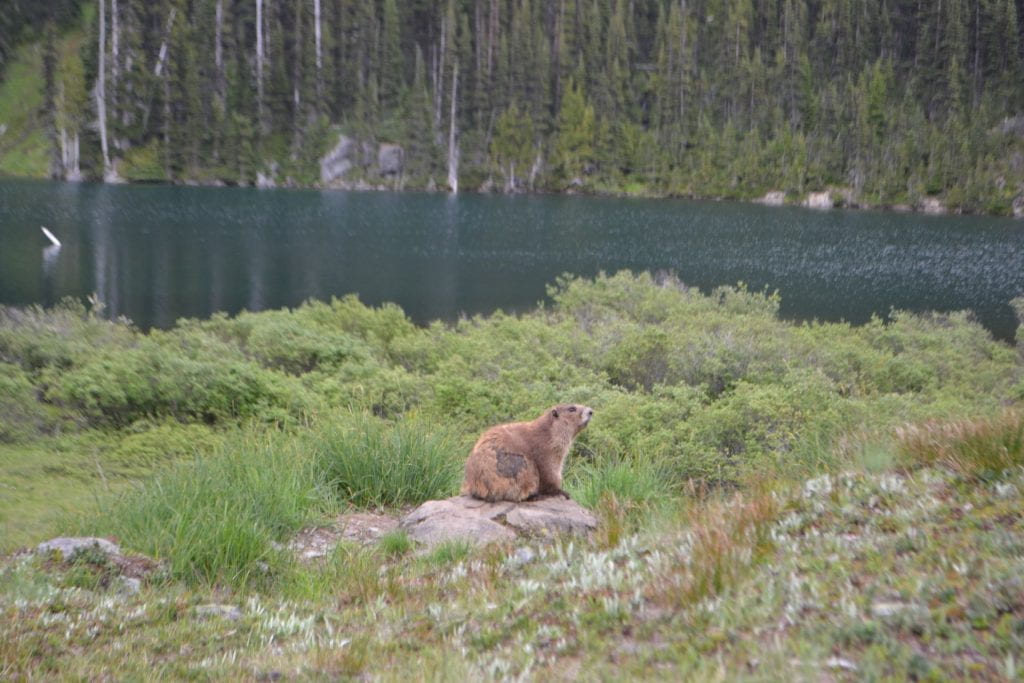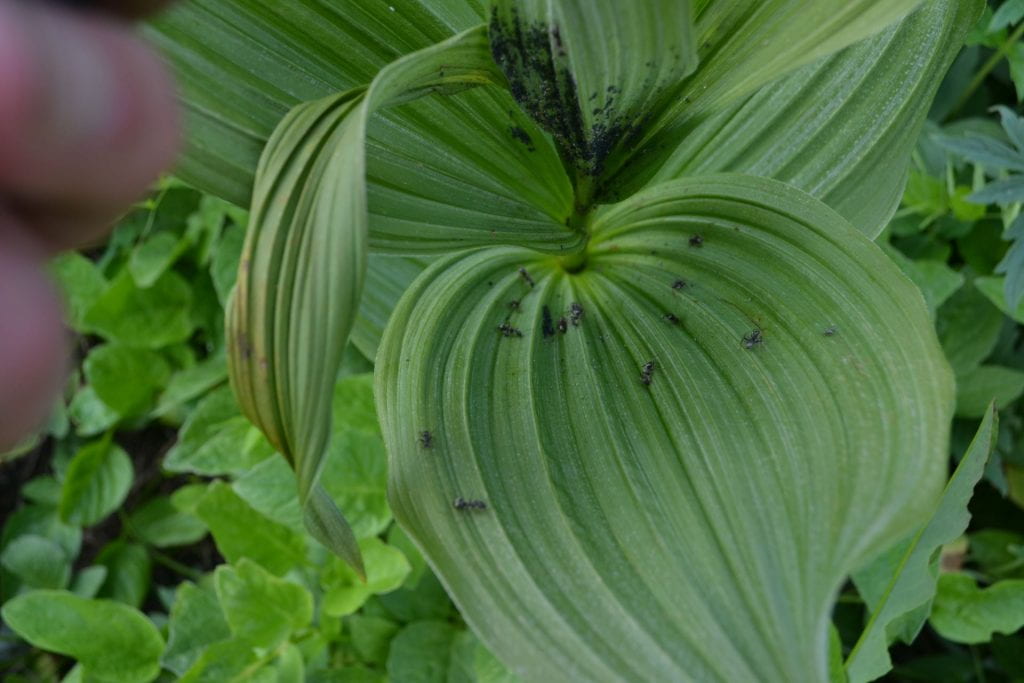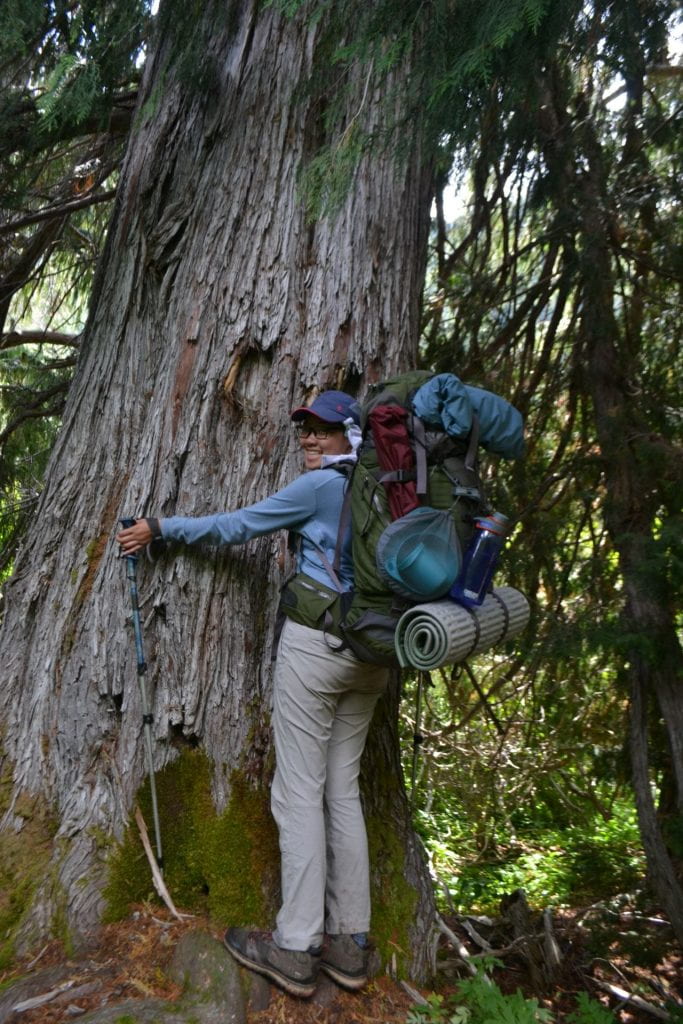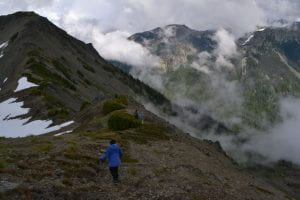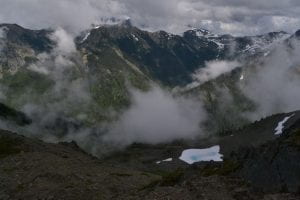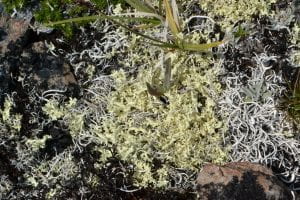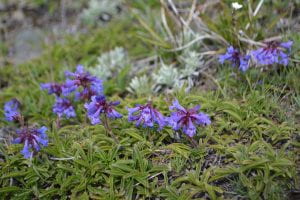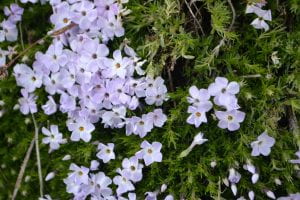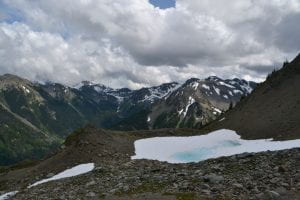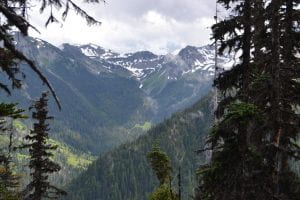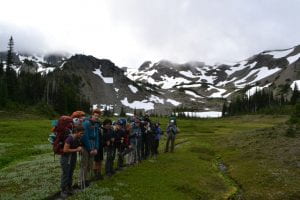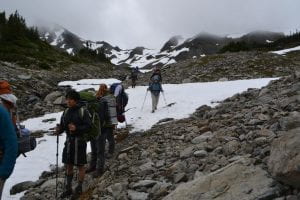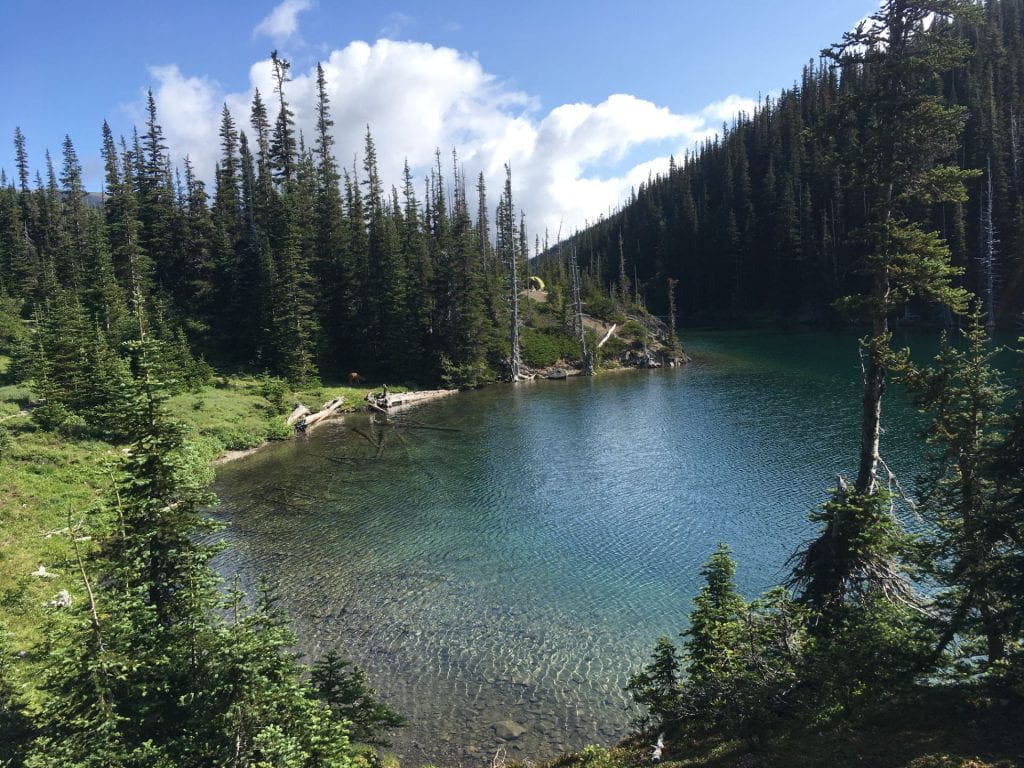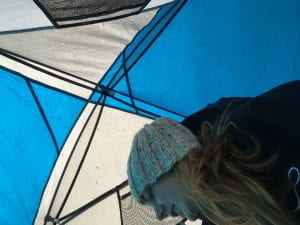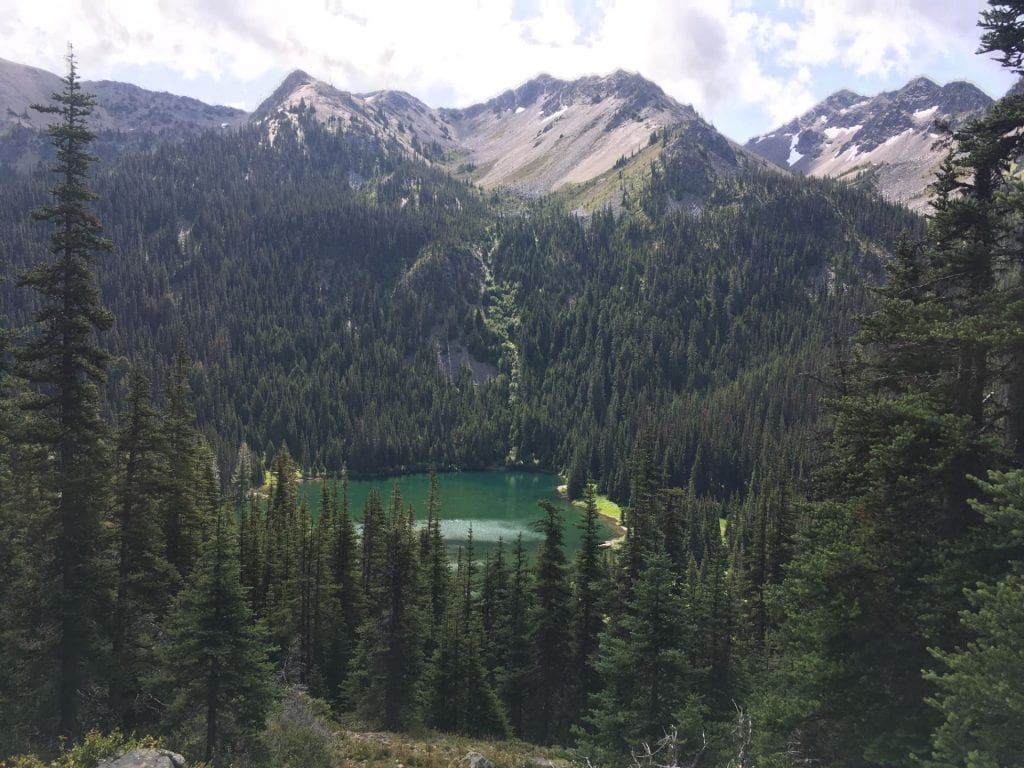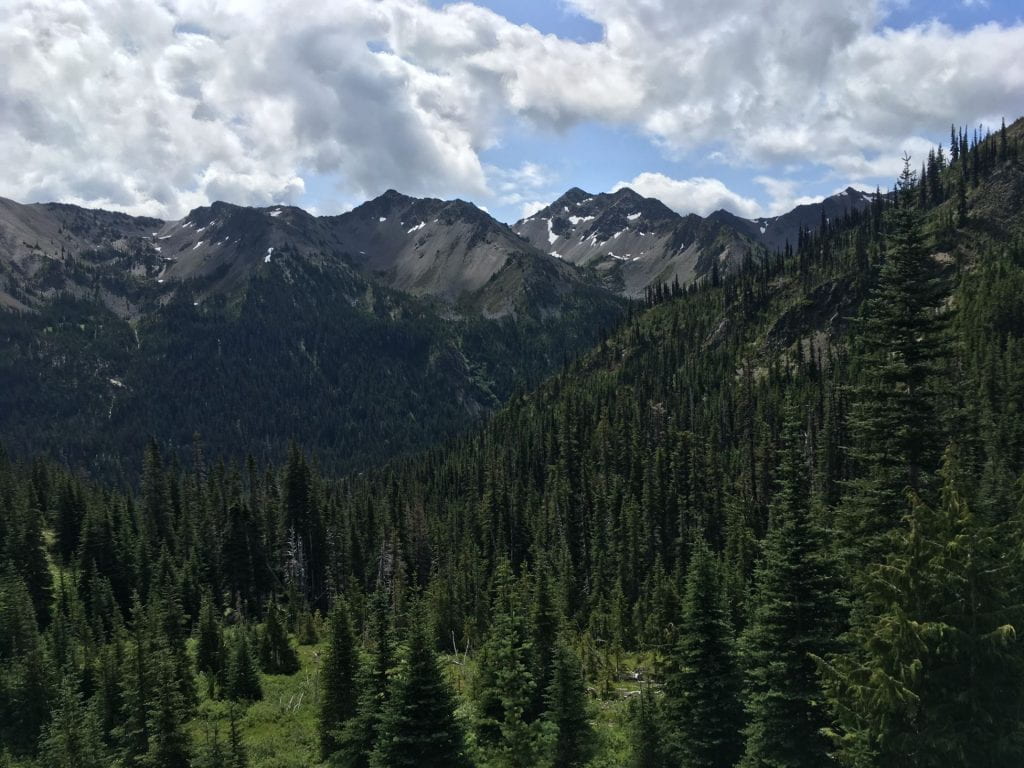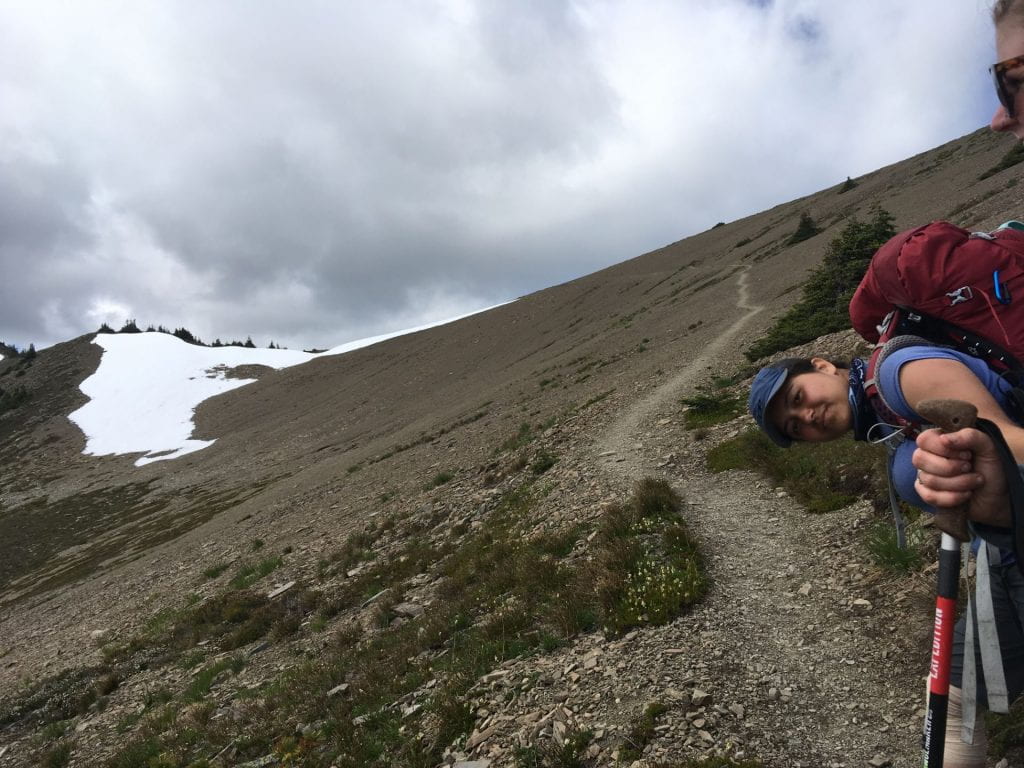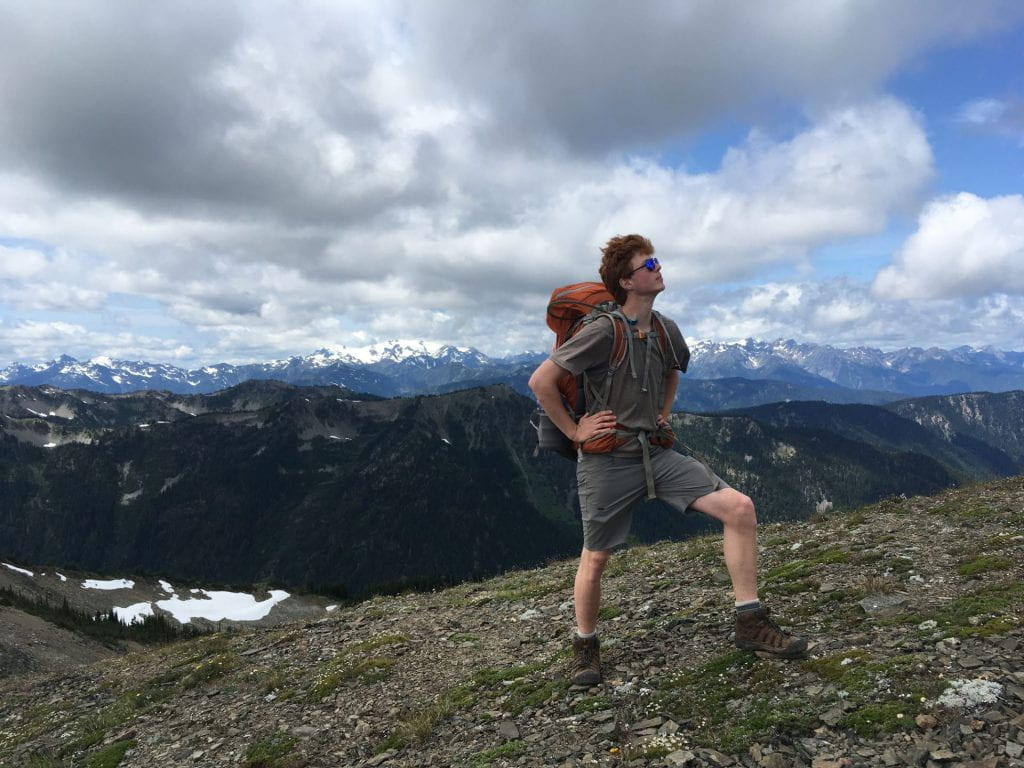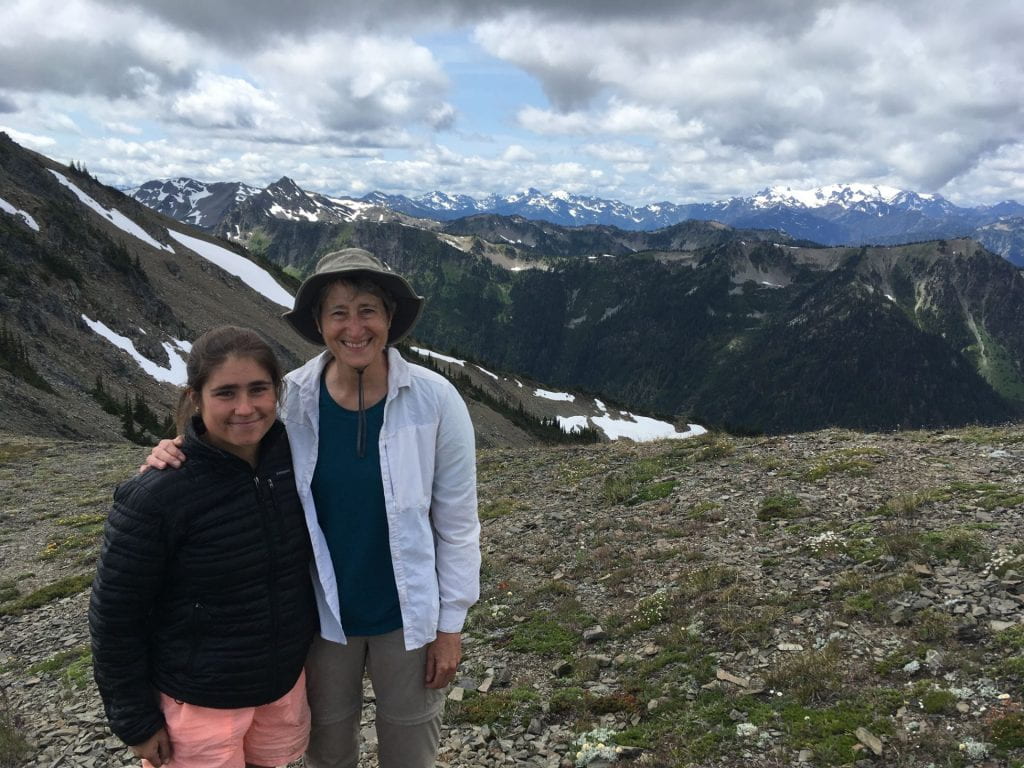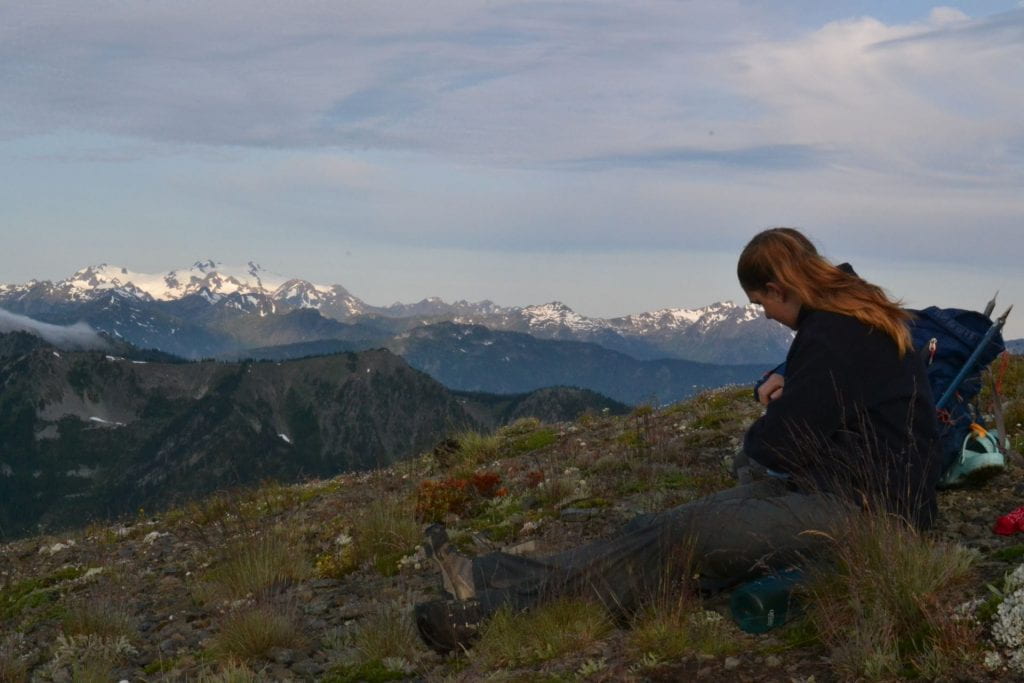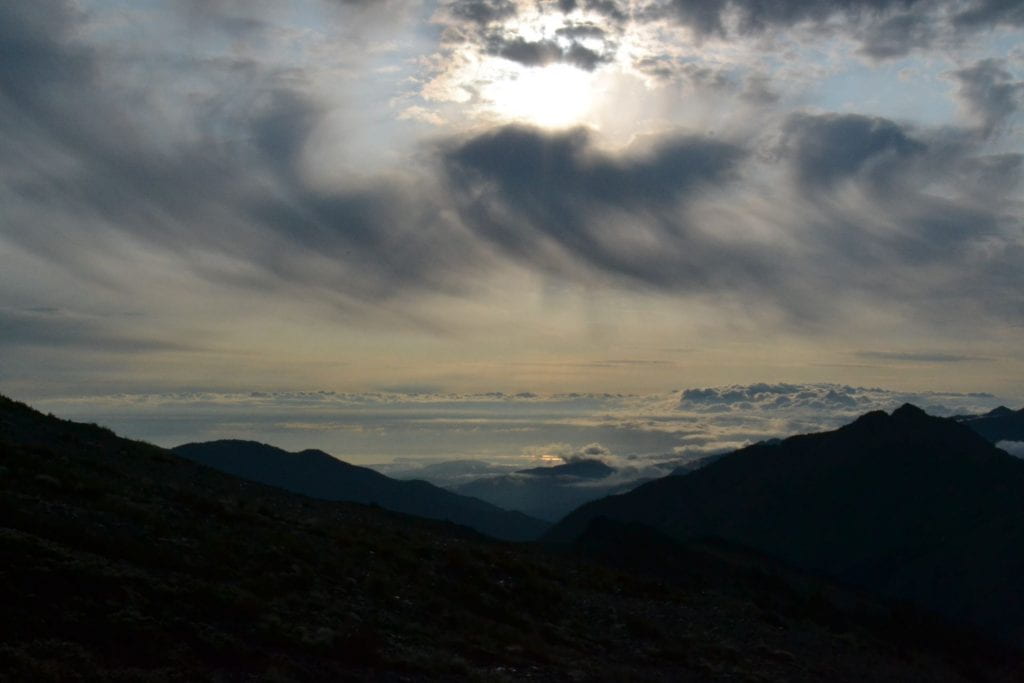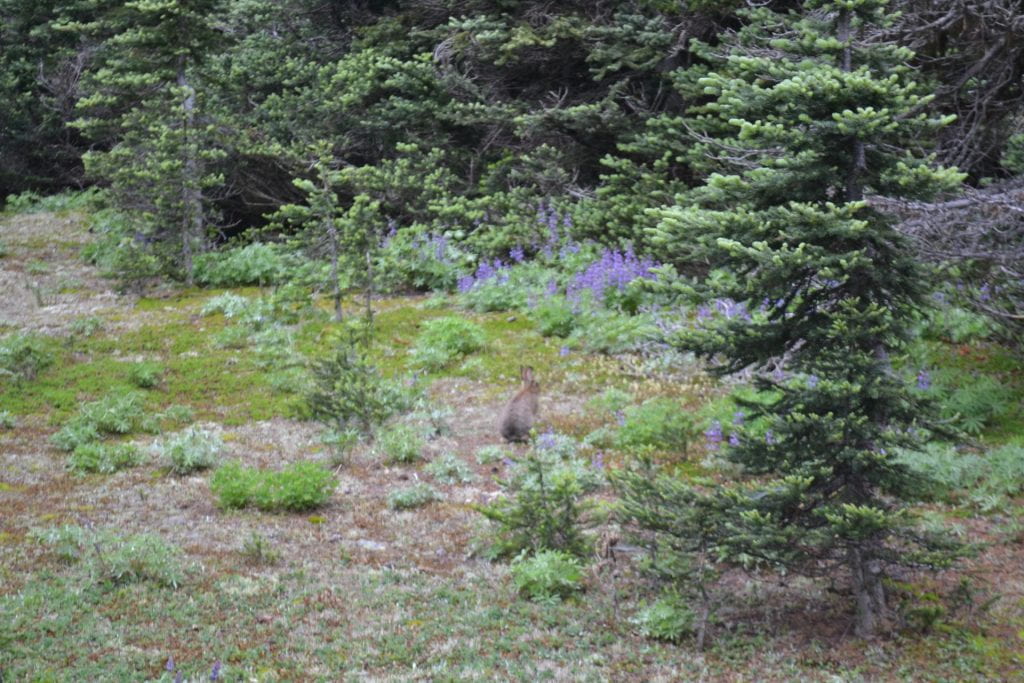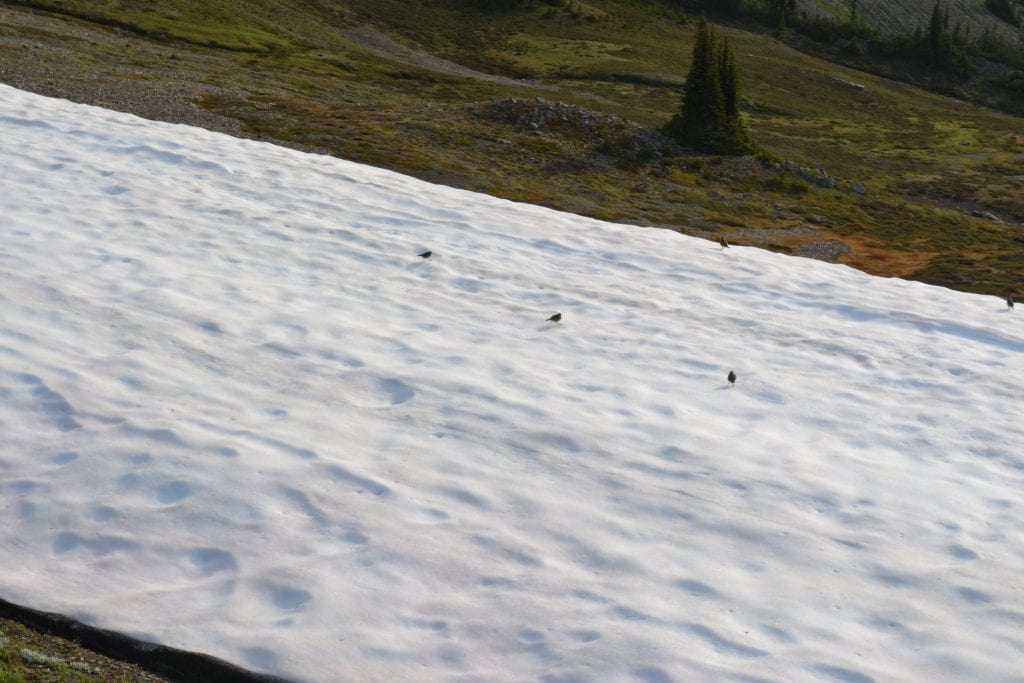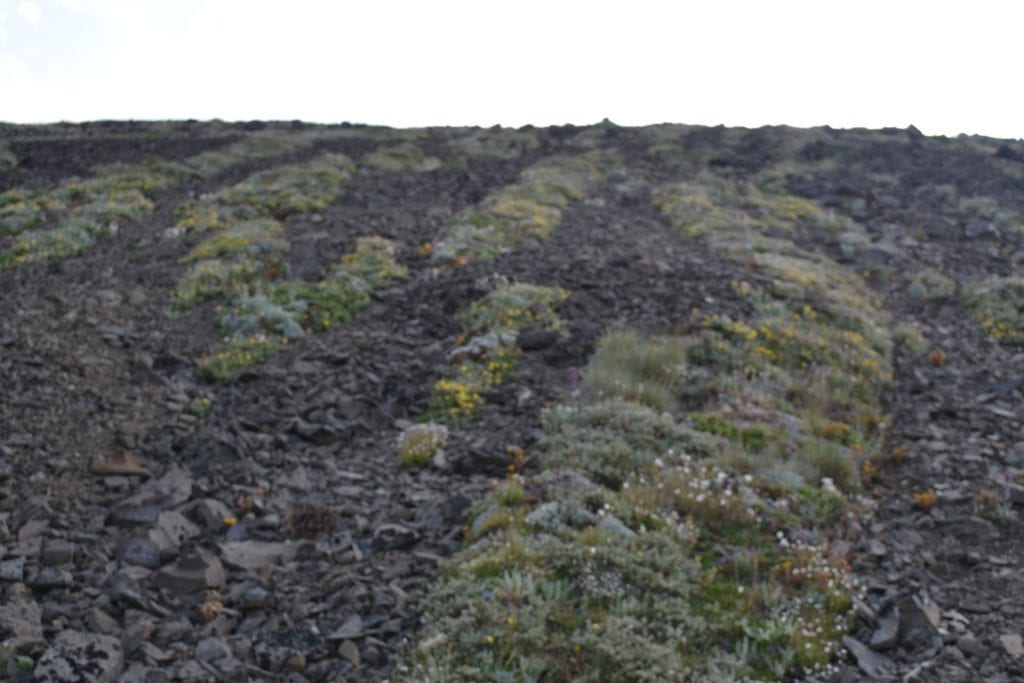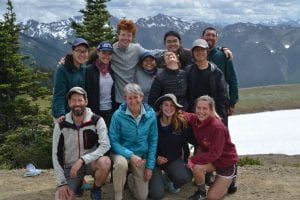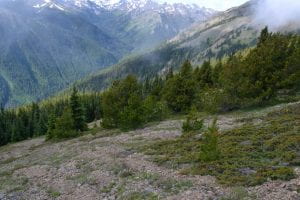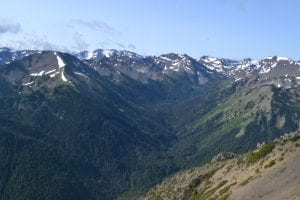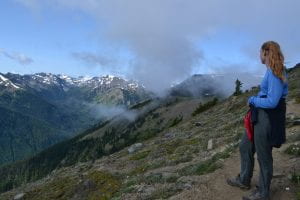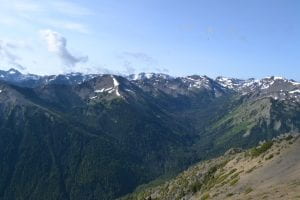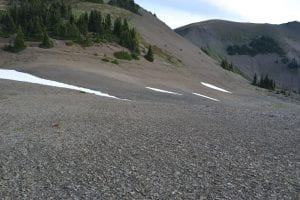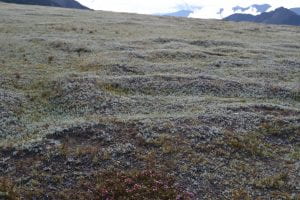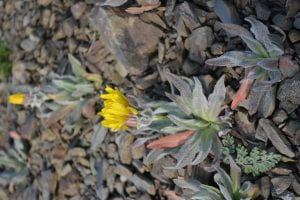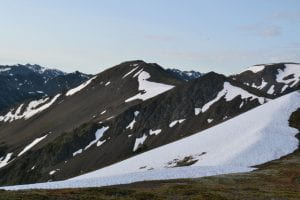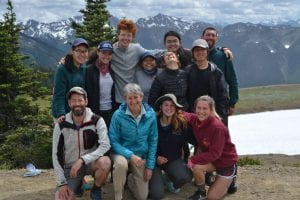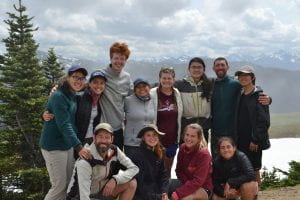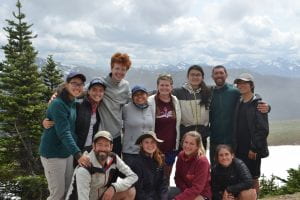
This year’s group: Back L-R: Amy Lin, Autumn Forespring, Zachariah Fincher, Hanna Lester, Katie Keil (Teaching Assistant extraordinaire–thank you Katie!), Zhewen Zheng, Nick Tritt, Jonathan Hong. Front: Tim Billo, Katie Spires, Diana Kawczynski, Aisling Doyle Wade. Photo Credit: Sally Jewell. The clouds in the background are the remnants of some of the strongest and wettest July storms in history, dubbed JAWS1 and JAWS2, by a local weather expert. The weather couldn’t get this group down, however; in fact it only fortified our camaraderie!

This year’s group again with guest instructor Sally Jewell, front row, blue jacket. It was a huge privilege to work with and learn from Sally again this year. Once again she inspired us with her wisdom and vision, as well as stories from her work as Secretary of the Interior under the Obama Administration. Sally is not one to rest on her laurels however. We were lucky that she was able to take two days away from her new position as CEO of the Nature Conservancy. We thank her for her service to our course and country, and wish her luck in her new position!
It was truly a pleasure to spend 9 days in the wilderness with the inspirational group of people you see above, on the 7th annual offering (click here for last year’s blog) of the interdisciplinary summer field course, ENVIR 495C: Landscape Change in the Pacific Northwest, offered by the University of Washington Environmental Studies Program. The course, taught primarily through the lens of a nine-day wilderness backpacking trip (July 6-14, 2019) in the northeast corner of Olympic National Park (which includes the homelands of the S’Klallam, Suquamish, and other Coast Salish people), explores changes in the regional landscape in the distant (back to the last ice age) and recent (the last 150 years of European settlement and industrialization) past, and what these recent changes mean for our future, from ecological, psychological, and philosophical standpoints. Using wilderness as a baseline, it also challenges the idea of wilderness itself: how the concept of wilderness came to be, who it serves and who it doesn’t, and what value it offers society in the Anthropocene, this critical juncture in Earth’s history.
Each student on the course led an evening discussion around a topic he or she was interested in, often incorporating outside quotes and background studies as a way to introduce the topic and provide more fodder for discussion. Discussion topics this year included: 1) the use of technology in wilderness, 2) ethics around management of the northern spotted owl and mountain goats in Olympic National Park, 3) changing concepts of wilderness in the 21st Century, 4) the historic and present place of Native Americans in wilderness, and the connection between decimation of indigenous peoples with the development of wilderness philosophy, 5) exploring work and recreation in nature, and ensuing dichotomies in environmental philosophy, 6) what wilderness can or can’t teach us about sustainability, 7) what wilderness can teach us about environmental activism and an evaluation of activism in general as part of the environmentalist toolkit, 9) balancing wilderness protection with the encouragement of increased visitation and equitable access for all people, and 10) visions of “ecotopia” and contrasting views on conservation in eastern vs. western philosophy. As in previous years, we also discussed the known effects of spending time in nature (and time away from technology) on human health, while feeling its positive effects on our own health as the trip progressed.
We were also able to study the effects of previous climate change events on range shifts of forest species up and down mountain sides. Large Douglas firs at high elevations are the remnants of a warm dry period 7-800 years ago, and silver firs at lower elevations seeded in during the Little Ice Age which ended only 200 years ago. Many alpine glaciers that expanded during the Little Ice Age have now massively contracted, leaving in their wake characteristic glacial deposits and a unique succession of species colonizing the bare soil. Nowhere was this more apparent than in our views of the upper Lillian Valley from Grand Peak, which we compared with a 1905 view of the now melted Lillian Glacier taken from the same location (pictures and further description in the Day 8 blog post). Along with the loss of ice and snow also comes a decline in a unique suite of species tied to this ecosystem, including ice worms and snow beetles, and a number of bird species that tie their existence to scavenging invertebrates that die on the surface of summer snow. We encountered an average, to slightly below average, snowpack this year. Relatively poor weather made encounters with other hikers infrequent (I think we saw only 2 hikers in the middle 5 days of the trip). At least 6 black bears were seen by our course this year (a record number for us), and we saw or heard nearly every species of bird we have encountered in the past on this route, with the exception of evening grosbeaks and Clark’s nutcracker (which is typically rare anyway). Some of our most rewarding bird sightings included a pair of golden eagles that soared with us in Thousand Acre Meadows, and gracing us again the following day as we hiked over Lost Pass.
The Olympic Mountains and its many historical alpine glaciers were connected to the continental ice sheets that flowed through the Puget Trough and Strait of Juan de Fuca only 16,500 years ago (sounds like a long time ago, but really a geologic “eye-blink” and not that many generations ago for our longest lived trees!). Despite the intrusion of ice from the north, as well as the growth of alpine glaciers down valleys in the Olympics, many of the highest ridges and some valley bottoms remained ice free during the last ice age, providing refugia for many local species, as well as arctic species that had moved south. Many of these species can still be found today in small relictual populations (we found rare populations of Rocky Mountain Juniper at Deer Park, expanding their foliage relative to photos taken 100 years ago), and some of them have evolved into forms unique to the Olympic Mountains (including alpine plant species such as the Piper’s bellflower and Flett’s violet, which we discovered in several ridgetop locations. Piper’s bellflower was just beginning to bloom, and Flett’s violet was all but done blooming for the year. Other endemics of note, include the Olympic flightless grasshopper, which we found at Grand Pass. Plant and animal species isolated on high ridges will be some of the first to go extinct given current projections for human-induced climate change, and it will be up to humans to decide whether to help these species out by moving them to places more climatically amenable (assuming they are incapable of dispersal themselves), or to let them go extinct one by one. Whether we have a moral imperative to save species is a bigger question, which we explore on the course, especially in “wilderness” areas which we have traditionally thought of as places where nature should be left to take care of itself, where man is only a “visitor” who does not meddle.
Between 1895 and 2015, the Seattle area grew from 40,000 people to over 4.2 million. In the next 25 years, Seattle will grow by another 1.5 million. Virtually every piece of accessible habitat in the lowlands of the Puget Trough has been severely impacted by humans at one time or another, in some cases irrevocably. It was by stroke of luck (due in part to the inaccessibility of the terrain in the early days), and a big dash of courage from some forward-thinking leaders around the turn of the 19th Century, that Olympic National Park and other areas like it were saved from the ax and/or development (although with the unfortunate consequence of denying native people sovereignty over their homelands, and access to key resources). In only 25 miles as the crow (or eagle) flies from Seattle, an international hub of high tech industry, one can begin a walk into the Olympic Mountains, a roadless area of over 1 million acres (approximately 1600 sq miles), not to mention similar areas in the Cascade Range. It is this short gradient from ultra-urban to wilderness, that also makes the region such an appealing place to live, as well as a unique place to reflect on landscape change (past, present, and future), and ramifications of this change (namely, the loss of “wild” spaces) for society in the Anthropocene.
As with every year I teach this course, I relish the opportunity for reflection on what our local wilderness areas teach me about myself and the greater landscape of “home”, as well as the many values our wilderness spaces offer society, from the ecological to the psychological. Extended wilderness travel offers us rare time and space (both of which are commodities in today’s world), to connect with our past, and to think deeply about how we might move forward as a society at this critical juncture in earth’s history, the beginning of the Anthropocene era.
In this blog, each student has written about one day of the trip, and offered additional personal thoughts on the importance of wilderness, a commodity whose value has recently been questioned in some conservation circles, as we enter the Anthropocene. It is my hope that this blog conveys the power of the wilderness learning experience and its deep impact on the lives of those who are lucky enough to experience it. For those who do not have the opportunity to experience it, perhaps this blog will bring them a step closer.
—
Below, I will add my personal reflection, as each student has done at the end of their post:
The wilderness of Olympic National Park has deep personal meaning for me. Having spent over 200 days traveling in the backcountry of Olympic National Park over the last 15 years, I always enjoy getting to know the landscape more intimately (especially as I notice small, and occasionally large, changes in the landscape along our route on a year to year basis). Teaching others to see the landscape through my eyes, as well as learning through their eyes, only heightens my awareness of place. I am always struck by the diversity of life one experiences on our 50 mile trek, a walking pace being more in tune with the pace in which our senses evolved to operate. Every day of the trip we pass through different habitats and life zones, and while forests, meadows, and alpine fellfields may occur in each drainage we pass through, each valley has a distinctive feel and a slightly different assemblage of species. In this national park, the details of each ecosystem are intact and relatively undisturbed by man. Each ecosystem merges seamlessly into the next, and natural disturbances heal themselves, because they are embedded in a healthy landscape (this is particularly evident to me as I also study urban forests and the pressures that urban forests face as tiny fragments of a once intact landscape). Relatively pristine nature is everywhere in Olympic, but at the same time it is not to be taken for granted. When we slow down, we begin to notice what usually goes unnoticed; something more than ourselves, something beautiful, something fragile, yet strong through its adaptations and interdependencies. A lark’s nest hidden behind a rock in alpine tundra, antlion larvae hiding in dry sand pits at the base of a yellow cedar, ice worms emerging on the surface of glaciers at night, pipits gleaning insects off of snow fields, an enormous bear entirely focused on gorging itself on ants, marmots huddling at the entrance to city-like networks of burrows, a tailed frog struggling across a soft carpet of moss to a stream, an emphemeral rainbow after a break in the rain, the ethereal call of a varied thrush coming through the fog, or a hatch of mayflies dancing in a (what was for us) a rare forest sun beam. Nine days in the cold and sometimes driving mountain rain and wind, teaches us about fragility. We are reduced to the same tasks and joys as the nature I just described. Our day is boiled down to the essentials of survival: getting enough food in us–occasionally gathering additional food from the ecosystem around us (this year we supplemented our diet with Olympic onion and puffball mushrooms), water (often carried great distances from streams), shelter (thinking about hard-to-come-by flat, sheltered, dry, and low-impact spots), group cooperation, and the occasional opportunity to revel in a rare beam of sunlight coming through the clouds. We engage our minds and bodies as evolution intended them to be engaged. And we recognize in our own fragility, the fragility of nature around us. But we also recognize the resilience of nature, as something real that all beings, including ourselves, are inextricably a part of. There is strength in our interconnectedness. As we work together to carry only what we need for 9 days, and become very aware of our own waste (as we pack it all out), we are deeply in tune with the essentials of life, and our impact on the web of life. A last crumb or a drop of water (even if that water is dish water) is not to be left unconsumed. Our bodies are tired, but our spirits are uplifted and calmed in a way that I believe only wilderness can teach. We realize our full potential as human beings. And we realize a certain humility, as we walk through spaces that are far older than our civilization. Spaces in which animals and plants have co-existed for eons relatively undisturbed by people, uniquely adapted to survival in the habitats they call home.
I am not a religious person, but my thoughts become spiritual when we make our annual pilgrimage to Thousand Acre Meadow, a giant mountain heath meadow that cannot be accessed by any trail. We immediately fall silent when we reach the first overlook of the meadow. We sit and stare, stunned as our minds open and overflow with the expanse of the landscape in front of us. More often than not, we spot bears simply being bears (as we did this year), totally unaware of us, meandering about in the meadow. Or again, this year, golden eagles soaring out of the mist along the ridges, or a merlin streaking down from a nearby peak as pipits disperse in all directions. Once we finally decide to enter the meadow, we each split away from each other to maintain our silence and solitude, and that sense of the sacred, letting our feet travel the trails created by marmots over centuries, as the curious animals calmly watch us from the entrances of their burrows; or simply letting our feet forge their own path as our minds, bodies, and senses engage fully with a three-dimensional space, forging unique paths as our curiosity draws us to different corners of the landscape. We gather again some 30 minutes or 120 minutes (depending) later on the lower end of the meadow, each having had a spiritual experience of our own, which is perhaps impossible to put into words. But we give each other knowing looks. We don’t break our silence until we find our way back to the trail, our souls having been enlightened in the presence of something utterly sacred. And this inexplicable “something”, we will take back with us as we re-enter our urbanized every-day existence. It is something humbling, it is something that feels right, and it is something that is missing in our fast-paced, hyper-technological lives in the Anthropocene. Sitting here writing this now, it is comforting to know that such a place exists, a space left intentionally without trails, where nature still does what nature has always done.
We crave these rare wilderness experiences all that they offer; real connections with our fellow human beings; a slower pace of life; fresh air, and engagement of mind and body. Yet, in our fast paced lives, we fail sometimes to even recognize these cravings for what they are. And sadly, for a variety of reasons, these experiences are not accessible to everyone, even those who recognize personal need. When we cannot access wilderness, we must try to preserve and access wild nature and “real” experience within our urban landscapes, so that we can experience even momentary reprieve from societal pressures that stress us in unnatural ways. It is up to all of us to advocate for and preserve the last remaining wild spaces, rural or urban, even if they are not spaces we will visit often, or even at all. In some cases it is just enough knowing that there are still spaces on earth where nature survives untrammeled, without interference from humans; where our mind expands and relaxes across a daydreamed landscape. But even these spaces, for all of the resilience built into them, are increasingly impacted by forces from the outside. Their persistence as functioning ecosystems is not at all a given, as climate warms, weather patterns change, and the landscape becomes more fragmented.
For those of us privileged to have experienced wilderness, we can work to bring similar experiences to others, and we can all take on the mantle of stewards, advocates, educators, and custodians. Sally Jewell was an important guest and mentor for us in this regard this year. As she repeatedly told her staff as Secretary of the Interior, “We are in the ‘forever’ business,” and, an inspirational saying whose origin is unknown, but to which Sally often refers, “We have not inherited the earth from our parents, we have borrowed it from our children.” We owe a debt of gratitude to a relatively few brave politicians and activists who had the vision to set aside wilderness landscapes, and to promote conservation even against the powerful financial forces of industry. We owe an even bigger debt of gratitude to the first peoples of our country, who have stewarded the resources of our lands since time immemorial. We have much to learn from their ancient cultures; a reflection of the long view, an arc of time that extends backwards and forwards, a true understanding of the deep past, as well as the concept of “borrowing from our children.” To them, the idea of wilderness is not even necessary. All of nature is sacred, and it is understood that humans are a part of the natural web. Nature feeds us physically, mentally, and spiritually, and must be respected. We are but a small part of it. Tragically, the Euro-American conception of wilderness preservation excluded indigenous peoples and cultures by inventing a false physical and metaphorical separation of man from “nature” with its focus on imagined “pristine” spaces. The Euro-American wilderness concept arose as a necessary and strong counterpoint to wasteful and exploitative industrial factions of the same Euro-American culture. Whether we arrive at a sense of respect for nature through the wilderness concept or through a Native American value system, it is time we all recognized with humility, the inextricable ecological and spiritual ties we have with the natural world, encoded deep within the DNA of all humans. And it is time we learned from indigenous cultures, expanding that respect for the natural world, even to the non-wilderness and less “pristine” facets of our landscape, being conscious about taking only what is necessary for our survival, while securing and restoring the resiliency of the natural ecosystems. Only then can there be a sustainable path forward for humans in the Anthropocene.
